BUDDHIST ASSOCIATION OF CHINA TAKES A LEADING ROLE IN CHINA’S ATTEMPTS TO CONTROL AND FORCIBLY RESHAPE TIBETAN BUDDHISM
BUDDHIST ASSOCIATION OF CHINA TAKES A LEADING ROLE IN CHINA’S ATTEMPTS TO CONTROL AND FORCIBLY RESHAPE TIBETAN BUDDHISM
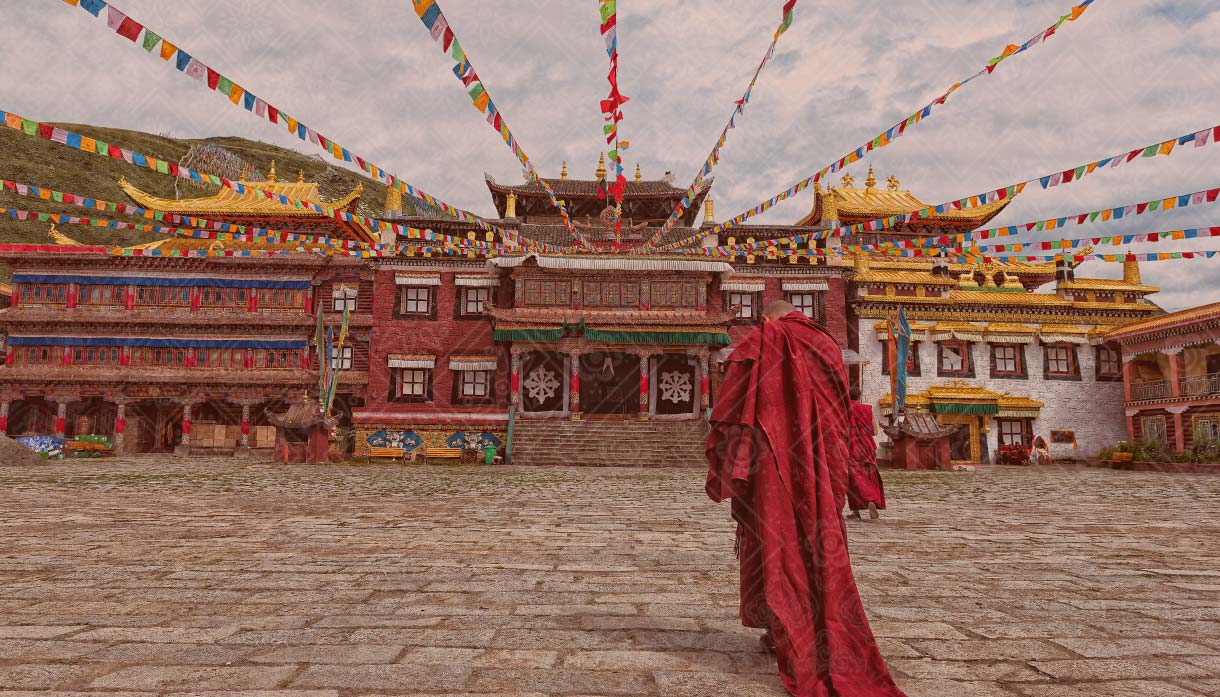
The Buddhist Association of China (BAC), a supposedly non-political organization, is becoming a key instrument in the Chinese Communist Party’s strategy to assimilate and transform Tibetan Buddhism, particularly in relation to the search for and recognition of reincarnate lamas. This process, which is intended to break down Tibetan Buddhism’s unique characteristics and to change it into a tool of the Chinese state, is known as Sinification.[1]
Since President Xi Jinping’s announcement of his intent to Sinify the religions of the PRC in 2012, the BAC has been mandated as the tool to implement campaigns that will contribute to its fruition, particularly in connection with Tibetan Buddhism. Accordingly, the BAC has been strengthening its institutional foundation in recent years, which includes five-year plans and shaping monastic training to meet political goals.
When the BAC was founded in 1953, its political agenda was not highlighted. The draft charter of the association discussed in its first meeting in May-June 1953 outlined its purpose:
To unite Buddhists throughout the country and, under the leadership of the people’s government, to participate in the movement for the protection of the motherland and the defense of world peace; to assist the people’s government in carrying out the policy of freedom of religion and belief, and to contact Buddhists in all parts of the country to carry forward the fine traditions of Buddhism.[2]
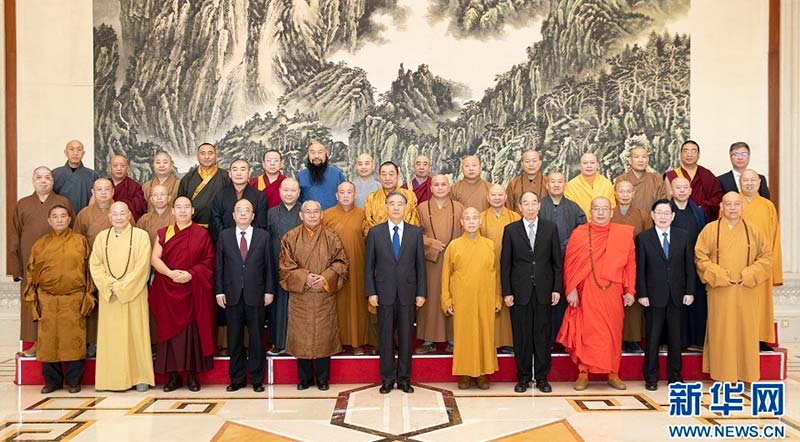
Current BAC leaders with then CPPCC chair Wang Yang in 2020.
However, the charter was amended in subsequent years with the political agenda becoming more prominent. In 2020 it was amended to include “Sinification of Buddhism in China” as one of its objectives, to read, “support the leadership of the Communist Party of China and the socialist system, study and implement Xi Jinping Thought on Socialism with Chinese Characteristics for a New Era, adhere to the direction of the Sinification of Buddhism in China.”[3]
Today, the BAC has adopted an overwhelming political tone and language and exhibits no qualms in pushing forward the CCP’s political agenda.
The Chinese leadership’s objective of Sinification of Tibetan Buddhism was most recently reiterated during the Two Sessions held in March 2024, when Wang Huning, head of the Chinese People’s Political Consultative Conference (CPPCC), said that they “carried out 10 research and inspections in Tibet, Xinjiang, and Tibet-related counties in Sichuan Province on promoting the Sinification of Tibetan Buddhism.”
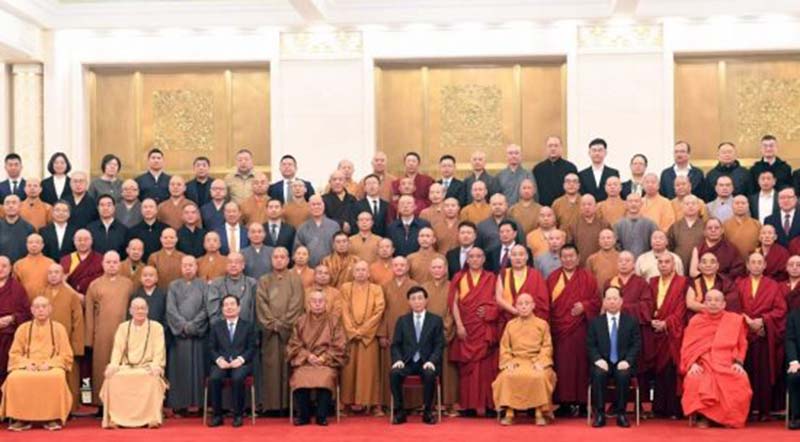
CPPCC Chair Wang Huning with BAC leaders in October 2023.
The Buddhist Association of China (BAC), a supposedly non-political organization, is becoming a key instrument in the Chinese Communist Party’s strategy to assimilate and transform Tibetan Buddhism, particularly in relation to the search for and recognition of reincarnate lamas. This process, which is intended to break down Tibetan Buddhism’s unique characteristics and to change it into a tool of the Chinese state, is known as Sinification.[1]
Since President Xi Jinping’s announcement of his intent to Sinify the religions of the PRC in 2012, the BAC has been mandated as the tool to implement campaigns that will contribute to its fruition, particularly in connection with Tibetan Buddhism. Accordingly, the BAC has been strengthening its institutional foundation in recent years, which includes five-year plans and shaping monastic training to meet political goals.
When the BAC was founded in 1953, its political agenda was not highlighted. The draft charter of the association discussed in its first meeting in May-June 1953 outlined its purpose:
To unite Buddhists throughout the country and, under the leadership of the people’s government, to participate in the movement for the protection of the motherland and the defense of world peace; to assist the people’s government in carrying out the policy of freedom of religion and belief, and to contact Buddhists in all parts of the country to carry forward the fine traditions of Buddhism.[2]
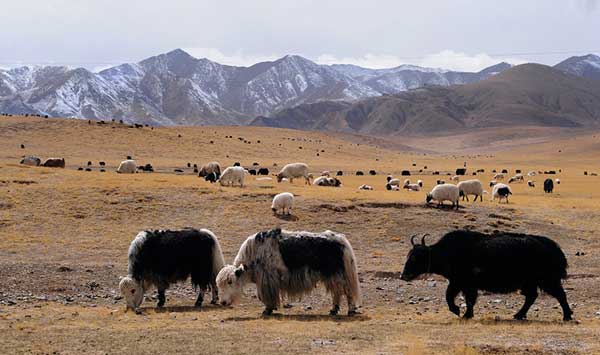
Current BAC leaders with then CPPCC chair Wang Yang in 2020.
However, the charter was amended in subsequent years with the political agenda becoming more prominent. In 2020 it was amended to include “Sinification of Buddhism in China” as one of its objectives, to read, “support the leadership of the Communist Party of China and the socialist system, study and implement Xi Jinping Thought on Socialism with Chinese Characteristics for a New Era, adhere to the direction of the Sinification of Buddhism in China.”[3]
Today, the BAC has adopted an overwhelming political tone and language and exhibits no qualms in pushing forward the CCP’s political agenda.
The Chinese leadership’s objective of Sinification of Tibetan Buddhism was most recently reiterated during the Two Sessions held in March 2024, when Wang Huning, head of the Chinese People’s Political Consultative Conference (CPPCC), said that they “carried out 10 research and inspections in Tibet, Xinjiang, and Tibet-related counties in Sichuan Province on promoting the Sinification of Tibetan Buddhism.”

CPPCC Chair Wang Huning with BAC leaders in October 2023.
SINIFICATION IS MORE THAN ‘BECOMING CHINESE’
The CCP strategy of Sinification is more than its literal meaning of transforming something into Chinese. This is evident from the fact that even the traditional home-grown Chinese religion Daoism is having to go through Sinification, with the China Daoist Association being assigned to take the lead.[4]
At a “Buddhist Educational Affairs and Teaching Style Work Training Course of the China Buddhist Association” on Mount Wutai, Shanxi province on Sept. 5, 2023, participants were told that “Sinicizing” Buddhism means to “comprehensively and thoroughly study and implement the spirit of the 20th National Congress of CCP and Xi Jinping Thought on Socialism with Chinese Characteristics for a New Era, and thoroughly study and implement General Secretary Xi Jinping’s important expositions on religious work.”[5]
The Chinese authorities have realized that Tibetan Buddhism is the core of Tibetan identity, and the attempt is to alter this identity to comply with their CCP goals. Thus, to the CCP, Sinification serves to make Tibetan Buddhism conform to the CCP ideology and be an active agent of its promotion and implementation.
Sinification is thus linked to the future of Tibetan Buddhism. During his visit to the Tibetan town of Chamdo (Chinese: Changdu) in June 2023, the China-selected Panchen Lama Gyaltsen Norbu was quoted by state media as saying, “Today, whether or not Tibetan Buddhism can adapt to the socialist society with Chinese characteristics and whether or not we can sinicize Tibetan Buddhism will determine the future and development of Tibetan Buddhism.”[6]
As far back as 2014, at a seminar on “Implementation of Sinification of Tibetan Buddhism” held at the Sichuan Tibetan Buddhist College in Chengdu, the Chinese authorities laid out four reasons for Sinification:
The Sinification of Tibetan Buddhism is an inevitable requirement for the healthy inheritance of Tibetan Buddhism, inevitable requirement for Tibetan Buddhism to be compatible with socialist society. the inevitable requirement for the integration of Tibetan Buddhism and Chinese culture, and the inevitable requirement for synchronization with the rule of law.[7]
SINIFICATION IS MORE THAN ‘BECOMING CHINESE’
The CCP strategy of Sinification is more than its literal meaning of transforming something into Chinese. This is evident from the fact that even the traditional home-grown Chinese religion Daoism is having to go through Sinification, with the China Daoist Association being assigned to take the lead.[4]
At a “Buddhist Educational Affairs and Teaching Style Work Training Course of the China Buddhist Association” on Mount Wutai, Shanxi province on Sept. 5, 2023, participants were told that “Sinicizing” Buddhism means to “comprehensively and thoroughly study and implement the spirit of the 20th National Congress of CCP and Xi Jinping Thought on Socialism with Chinese Characteristics for a New Era, and thoroughly study and implement General Secretary Xi Jinping’s important expositions on religious work.”[5]
The Chinese authorities have realized that Tibetan Buddhism is the core of Tibetan identity, and the attempt is to alter this identity to comply with their CCP goals. Thus, to the CCP, Sinification serves to make Tibetan Buddhism conform to the CCP ideology and be an active agent of its promotion and implementation.
Sinification is thus linked to the future of Tibetan Buddhism. During his visit to the Tibetan town of Chamdo (Chinese: Changdu) in June 2023, the China-selected Panchen Lama Gyaltsen Norbu was quoted by state media as saying, “Today, whether or not Tibetan Buddhism can adapt to the socialist society with Chinese characteristics and whether or not we can sinicize Tibetan Buddhism will determine the future and development of Tibetan Buddhism.”[6]
As far back as 2014, at a seminar on “Implementation of Sinification of Tibetan Buddhism” held at the Sichuan Tibetan Buddhist College in Chengdu, the Chinese authorities laid out four reasons for Sinification:
The Sinification of Tibetan Buddhism is an inevitable requirement for the healthy inheritance of Tibetan Buddhism, inevitable requirement for Tibetan Buddhism to be compatible with socialist society. the inevitable requirement for the integration of Tibetan Buddhism and Chinese culture, and the inevitable requirement for synchronization with the rule of law.[7]
FALSE NARRATIVE ON TIBETAN BUDDHISM SERVES TO LEGITIMIZE SINIFICATION
To lay a foundation for Sinification of Tibetan Buddhism, China is attempting to create a false narrative in terms of its history, as with China’s political claim over Tibet, which it says goes back in history. The most recent indication of this is in an article on Tibet in the authoritative CCP theoretical bimonthly journal “Qiushi” (“Seeking Truth”) on March 16, 2024, which categorically asserts, “Tibetan Buddhism is a product of the Sinification of Buddhism and has played a positive role in the formation of China’s unified multi-ethnic state.”[8] To make this article even more authoritative, “CPC Tibet Autonomous Region Committee” has been listed as the author.[9] Similarly, state media outlet China Daily carried an “interview” on Tibetan Buddhism with a researcher with the Minzu University of China (formerly the Institute for Nationalities). When asked as to the origin of Tibetan Buddhism, the researcher is reported as saying, “Tibetan Buddhism not only originates from ancient Indian Buddhism, but also from Chinese Buddhism.”[10] The China-selected Panchen Lama told a meeting of the China Buddhist Association that “Tibetan Buddhism is an important part of the excellent traditional Chinese culture.”[11]
FALSE NARRATIVE ON TIBETAN BUDDHISM SERVES TO LEGITIMIZE SINIFICATION
To lay a foundation for Sinification of Tibetan Buddhism, China is attempting to create a false narrative in terms of its history, as with China’s political claim over Tibet, which it says goes back in history. The most recent indication of this is in an article on Tibet in the authoritative CCP theoretical bimonthly journal “Qiushi” (“Seeking Truth”) on March 16, 2024, which categorically asserts, “Tibetan Buddhism is a product of the Sinification of Buddhism and has played a positive role in the formation of China’s unified multi-ethnic state.”[8] To make this article even more authoritative, “CPC Tibet Autonomous Region Committee” has been listed as the author.[9] Similarly, state media outlet China Daily carried an “interview” on Tibetan Buddhism with a researcher with the Minzu University of China (formerly the Institute for Nationalities). When asked as to the origin of Tibetan Buddhism, the researcher is reported as saying, “Tibetan Buddhism not only originates from ancient Indian Buddhism, but also from Chinese Buddhism.”[10] The China-selected Panchen Lama told a meeting of the China Buddhist Association that “Tibetan Buddhism is an important part of the excellent traditional Chinese culture.”[11]
CHANGES TO CHINESE POLICY ON TIBETAN BUDDHISM
To put the role of the BAC in context, it is vital to understand the changes to the Chinese government’s approach to Tibetan Buddhism. For the first several years leading to and after the Chinese invasion and occupation of Tibet, there was a policy of complete annihilation of Tibetan religion, including its institutions. In 1960, one year after the Dalai Lama was able to escape from Tibet to India, with around 80,000 Tibetans able to follow him, the Legal Inquiry Committee of the International Commission of Jurists issued a report following extensive interviews with Tibetan refugees, concluding, “The evidence available from Chinese sources themselves reveals an intention to put an end to the ancient religious practices and institutions of Tibet and to allow only that degree of freedom of religious belief which would be compatible with complete acceptance of communism, in short, none at all.”[12]
After the Cultural Revolution, there was a brief period of liberalization in the 1980s, leading to a resurgence of Tibetan religious fervor. In an apparent realization of the failure of its policy of elimination of Tibetan Buddhism, the Chinese leadership slowly began to change its policy to one of control.
The CCP’s notorious United Front Work Department (UFWD) is in overall charge of Sinification with the State Administration of Religious Affairs (SARA)—which until 2018 was under the State Council and since then has been put directly under the control of the UFWD—projected as the functional department of the government to implement the policy. In fact, all meetings of the BAC at different levels are not only participated by UFWD officials but are addressed by them with their remarks becoming the guiding principles. The BAC is thus being used as the front to give religious legitimacy to the implementation of the CCP policy.
Accordingly, both SARA and the BAC have been issuing directives over the past several years all aimed at making Tibetan Buddhism conform with CCP ideology.
In 2009, the BAC adopted Measures for Qualification Certification of Tibetan Buddhist Clergy outlining the fundamental requirement of allegiance to the CCP to teach in the monasteries. These measures were revised by the BAC in 2019 with the following being the first of the basic conditions to be met by a teacher: “Love the country and religion, support the leadership of the Communist Party of China, support the socialist system, adhere to the path of socialism with Chinese characteristics, abide by the constitution, laws, regulations, rules and policies, and unequivocally safeguard the unity of the motherland, oppose ethnic divisions, and maintain religious harmony; be harmonious with society, adhere to the direction of Sinicizing Buddhism, and practice the core socialist values.”
In 2011, the BAC announced “Measures for the appointment of main teaching positions in Tibetan Buddhist monasteries” in which a fundamental requirement for being in monastic leadership positions like Khenpo (abbot), Gekoe (disciplinarian), Umze (chant master) is to “Support the leadership of the Communist Party of China and the socialist system.”[13]
The traditional system of awarding religious degrees by the ecclesiastical community was replaced with the CCP-controlled State Administration of Religious Affairs and the religious affairs departments of the people’s governments of provinces and autonomous regions being appointed to supervise and guide the awarding of Tibetan Buddhist degrees.
CHANGES TO CHINESE POLICY ON TIBETAN BUDDHISM
To put the role of the BAC in context, it is vital to understand the changes to the Chinese government’s approach to Tibetan Buddhism. For the first several years leading to and after the Chinese invasion and occupation of Tibet, there was a policy of complete annihilation of Tibetan religion, including its institutions. In 1960, one year after the Dalai Lama was able to escape from Tibet to India, with around 80,000 Tibetans able to follow him, the Legal Inquiry Committee of the International Commission of Jurists issued a report following extensive interviews with Tibetan refugees, concluding, “The evidence available from Chinese sources themselves reveals an intention to put an end to the ancient religious practices and institutions of Tibet and to allow only that degree of freedom of religious belief which would be compatible with complete acceptance of communism, in short, none at all.”[12]
After the Cultural Revolution, there was a brief period of liberalization in the 1980s, leading to a resurgence of Tibetan religious fervor. In an apparent realization of the failure of its policy of elimination of Tibetan Buddhism, the Chinese leadership slowly began to change its policy to one of control.
The CCP’s notorious United Front Work Department (UFWD) is in overall charge of Sinification with the State Administration of Religious Affairs (SARA)—which until 2018 was under the State Council and since then has been put directly under the control of the UFWD—projected as the functional department of the government to implement the policy. In fact, all meetings of the BAC at different levels are not only participated by UFWD officials but are addressed by them with their remarks becoming the guiding principles. The BAC is thus being used as the front to give religious legitimacy to the implementation of the CCP policy.
Accordingly, both SARA and the BAC have been issuing directives over the past several years all aimed at making Tibetan Buddhism conform with CCP ideology.
In 2009, the BAC adopted Measures for Qualification Certification of Tibetan Buddhist Clergy outlining the fundamental requirement of allegiance to the CCP to teach in the monasteries. These measures were revised by the BAC in 2019 with the following being the first of the basic conditions to be met by a teacher: “Love the country and religion, support the leadership of the Communist Party of China, support the socialist system, adhere to the path of socialism with Chinese characteristics, abide by the constitution, laws, regulations, rules and policies, and unequivocally safeguard the unity of the motherland, oppose ethnic divisions, and maintain religious harmony; be harmonious with society, adhere to the direction of Sinicizing Buddhism, and practice the core socialist values.”
In 2011, the BAC announced “Measures for the appointment of main teaching positions in Tibetan Buddhist monasteries” in which a fundamental requirement for being in monastic leadership positions like Khenpo (abbot), Gekoe (disciplinarian), Umze (chant master) is to “Support the leadership of the Communist Party of China and the socialist system.”[13]
The traditional system of awarding religious degrees by the ecclesiastical community was replaced with the CCP-controlled State Administration of Religious Affairs and the religious affairs departments of the people’s governments of provinces and autonomous regions being appointed to supervise and guide the awarding of Tibetan Buddhist degrees.
PARTY COMMITTEE WITHIN THE BAC
One concrete indication of the entrenched ideological role for the BAC is the institution of a Party Committee within it even though it is a religion-focused entity, supposedly run by religious leaders. Given that CCP members are not permitted to join any religion, the BAC party committee’s leadership seems to be from the United Front Work Department. For example, the Tibet Autonomous Region BAC party committee’s general secretary is Sonam Rinzin (Chinese: Suolang Renzeng), who was a deputy head of the TAR United Front Work Department before becoming a vice chair of the TAR CPPCC.
The Party Secretary of the Dechen (Diqing) Tibetan Autonomous Prefecture Buddhist Association is Yang Jinhua, also a lay Tibetan and a CCP cadre. He has been working in Dechen since 1995, including in the CCP’s foreign affairs and propaganda divisions in the prefecture.
Naturally, the party committee in the BAC is the decision-making authority, above the abbots and lamas, and has total control of the monastic community.
PARTY COMMITTEE WITHIN THE BAC
One concrete indication of the entrenched ideological role for the BAC is the institution of a Party Committee within it even though it is a religion-focused entity, supposedly run by religious leaders. Given that CCP members are not permitted to join any religion, the BAC party committee’s leadership seems to be from the United Front Work Department. For example, the Tibet Autonomous Region BAC party committee’s general secretary is Sonam Rinzin (Chinese: Suolang Renzeng), who was a deputy head of the TAR United Front Work Department before becoming a vice chair of the TAR CPPCC.
The Party Secretary of the Dechen (Diqing) Tibetan Autonomous Prefecture Buddhist Association is Yang Jinhua, also a lay Tibetan and a CCP cadre. He has been working in Dechen since 1995, including in the CCP’s foreign affairs and propaganda divisions in the prefecture.
Naturally, the party committee in the BAC is the decision-making authority, above the abbots and lamas, and has total control of the monastic community.
SEEKING GLOBAL LEGITIMACY FOR THE BAC
As part of its efforts to have the BAC be an effective tool in fulfilling its political agenda, the CCP had the BAC organize major Buddhist conferences to seek international legitimacy. Thus, in April 2006, the first of what is called the World Buddhist Forum was held in China (the occasion was also used to launch the China-selected Panchen Lama on international stage[14]), with the second in 2009 and the third in 2012. Since “harmonious society” was the guiding CCP ideology under then-President Hu Jintao, the theme of each conference was also shaped accordingly as being “A harmonious world begins in the mind.” But after Xi Jinping took over in 2012, the fourth forum in 2015 and the fifth in 2018 replaced the “harmonious society” theme. The sixth WBF is scheduled this year in Ningbo.
SEEKING GLOBAL LEGITIMACY FOR THE BAC
As part of its efforts to have the BAC be an effective tool in fulfilling its political agenda, the CCP had the BAC organize major Buddhist conferences to seek international legitimacy. Thus, in April 2006, the first of what is called the World Buddhist Forum was held in China (the occasion was also used to launch the China-selected Panchen Lama on international stage[14]), with the second in 2009 and the third in 2012. Since “harmonious society” was the guiding CCP ideology under then-President Hu Jintao, the theme of each conference was also shaped accordingly as being “A harmonious world begins in the mind.” But after Xi Jinping took over in 2012, the fourth forum in 2015 and the fifth in 2018 replaced the “harmonious society” theme. The sixth WBF is scheduled this year in Ningbo.
INDOCTRINATION THROUGH SPECIALIZED INSTITUTES
One of the ways adopted to control Tibetan Buddhism was the establishment of specialized training institutes for Tibetan Buddhist clergy outside of the framework of traditional monasteries.
After shifting to a policy of control of Tibetan Buddhism in the 1980s, a series of Tibetan Buddhist institutes was established by the CCP, all overseen by the BAC, wherein patriotic education was an integral part of its curriculum. In 1982, the first such institute, the High-level Tibetan Buddhist College, was opened near the Tibetan capital Lhasa. Interestingly, the authorities closed this institute in 1996, citing “the influence of the Dalai Lama clique’s separatist activities,” and reestablished it only in 2009. In 1984, the Qinghai Tibetan Buddhist College and the Sichuan Tibetan Buddhist College were established. In 1986 the Gansu Buddhist College was established to train Tibetan monks and nuns from Kanlho (Gannan) Tibetan Autonomous Prefecture. Thereafter, a High-level Tibetan Buddhism College of China was set up in 1987 in Beijing to serve as the national body. The Yunnan Tibetan Buddhist College was established in 1997. The college in Beijing has subsequently been charged with overseeing the giving of monastic degrees, traditionally the role of the monastic organization.
An example of how the indoctrination of the students in these institutes is taking place can be seen from a seminar on “History Customization and Policies and Regulations of the Reincarnation of Tibetan Buddhist Living Buddhas” at the High-level Tibetan Buddhism College of China on March 8, 2024. Participants were told by a CCP official to “deepen their study of the religious rituals and historical customization of the reincarnation of the Living Buddha, and fully understand that the domestic search for the reincarnation of the Great Living Buddha, the drawing of lots from the golden urn, and the government approval of historical customs are necessary for the reincarnation of the Living Buddha. important principles to uphold.”[15]
INDOCTRINATION THROUGH SPECIALIZED INSTITUTES
One of the ways adopted to control Tibetan Buddhism was the establishment of specialized training institutes for Tibetan Buddhist clergy outside of the framework of traditional monasteries.
After shifting to a policy of control of Tibetan Buddhism in the 1980s, a series of Tibetan Buddhist institutes was established by the CCP, all overseen by the BAC, wherein patriotic education was an integral part of its curriculum. In 1982, the first such institute, the High-level Tibetan Buddhist College, was opened near the Tibetan capital Lhasa. Interestingly, the authorities closed this institute in 1996, citing “the influence of the Dalai Lama clique’s separatist activities,” and reestablished it only in 2009. In 1984, the Qinghai Tibetan Buddhist College and the Sichuan Tibetan Buddhist College were established. In 1986 the Gansu Buddhist College was established to train Tibetan monks and nuns from Kanlho (Gannan) Tibetan Autonomous Prefecture. Thereafter, a High-level Tibetan Buddhism College of China was set up in 1987 in Beijing to serve as the national body. The Yunnan Tibetan Buddhist College was established in 1997. The college in Beijing has subsequently been charged with overseeing the giving of monastic degrees, traditionally the role of the monastic organization.
An example of how the indoctrination of the students in these institutes is taking place can be seen from a seminar on “History Customization and Policies and Regulations of the Reincarnation of Tibetan Buddhist Living Buddhas” at the High-level Tibetan Buddhism College of China on March 8, 2024. Participants were told by a CCP official to “deepen their study of the religious rituals and historical customization of the reincarnation of the Living Buddha, and fully understand that the domestic search for the reincarnation of the Great Living Buddha, the drawing of lots from the golden urn, and the government approval of historical customs are necessary for the reincarnation of the Living Buddha. important principles to uphold.”[15]
BAC POLITICAL DIRECTION THROUGH FIVE YEAR PLAN ON SINIFICATION OF BUDDHISM
The BAC has come out with regulations and other bureaucratic control initiatives to meet its political objectives. On Sinification, in 2018 it announced the five-year work plan outline for adhering to the Sinification of Buddhism (2019-2023). This plan laid out the political direction of the BAC, calling for the study and implementation of Xi Jinping Thought, with the fundamental basis of supporting the CCP and core socialist values.[16]
Given that the first five-year plan has not been completely successful, in 2022, the BAC came out with another Five-Year Work Plan for Deepening the Sinification of Buddhism in China (2023-2027) for the next five years. The text of this latest plan is not publicly available yet, but the 2019-2023 plan had two direct references to Tibetan Buddhism. It mandated the Tibetan Buddhist community to work on explaining Buddhist teachings to strengthen its ideological construction in the “new era,” and providing expositions of the teachings and rules of Tibetan Buddhism that are in line with the requirements of the development and progress of contemporary China and in line with the excellent traditional Chinese culture.
BAC POLITICAL DIRECTION THROUGH FIVE YEAR PLAN ON SINIFICATION OF BUDDHISM
The BAC has come out with regulations and other bureaucratic control initiatives to meet its political objectives. On Sinification, in 2018 it announced the five-year work plan outline for adhering to the Sinification of Buddhism (2019-2023). This plan laid out the political direction of the BAC, calling for the study and implementation of Xi Jinping Thought, with the fundamental basis of supporting the CCP and core socialist values.[16]
Given that the first five-year plan has not been completely successful, in 2022, the BAC came out with another Five-Year Work Plan for Deepening the Sinification of Buddhism in China (2023-2027) for the next five years. The text of this latest plan is not publicly available yet, but the 2019-2023 plan had two direct references to Tibetan Buddhism. It mandated the Tibetan Buddhist community to work on explaining Buddhist teachings to strengthen its ideological construction in the “new era,” and providing expositions of the teachings and rules of Tibetan Buddhism that are in line with the requirements of the development and progress of contemporary China and in line with the excellent traditional Chinese culture.
BAC WORKING COMMITTEE ON TIBETAN BUDDHISM
The BAC has a special Tibetan Buddhism Working Committee, whose mandate is to “assist the party committee and government in strengthening the management of temples in accordance with the law and unite monks around the party and the government to the greatest extent.”[17] It is this committee that oversees the implementation of the CCP directives to the Tibetan monasteries.
The committee has 27 members, including four who are not Tibetan. The director is an elderly lama from Kardze (Ganzi), Gyalten Lobsang Jampa (Jiadeng Luorong Xiangba), who is known to be a “patriotic” lama.
In a statement on Sinification of Tibetan Buddhism issued in May 2023, the working committee said
We must take the lead in publicizing laws and regulations such as the “Measures for the Management of the Reincarnation of Living Buddhas of Tibetan Buddhism”, and in accordance with General Secretary Xi Jinping’s requirements of “being politically reliable, religiously accomplished, morally able to convince the public, and effective at critical moments”, and dare to take responsibility at critical moments, Always stand with the Communist Party of China and the Chinese people.[18]
BAC WORKING COMMITTEE ON TIBETAN BUDDHISM
The BAC has a special Tibetan Buddhism Working Committee, whose mandate is to “assist the party committee and government in strengthening the management of temples in accordance with the law and unite monks around the party and the government to the greatest extent.”[17] It is this committee that oversees the implementation of the CCP directives to the Tibetan monasteries.
The committee has 27 members, including four who are not Tibetan. The director is an elderly lama from Kardze (Ganzi), Gyalten Lobsang Jampa (Jiadeng Luorong Xiangba), who is known to be a “patriotic” lama.
In a statement on Sinification of Tibetan Buddhism issued in May 2023, the working committee said
We must take the lead in publicizing laws and regulations such as the “Measures for the Management of the Reincarnation of Living Buddhas of Tibetan Buddhism”, and in accordance with General Secretary Xi Jinping’s requirements of “being politically reliable, religiously accomplished, morally able to convince the public, and effective at critical moments”, and dare to take responsibility at critical moments, Always stand with the Communist Party of China and the Chinese people.[18]
PATRIOTIC EDUCATION FOR TIBETAN BUDDHISTS
The five-year plan also called for carrying out patriotic education, thus bringing a direct connection between the agenda of BAC and the Patriotic Education Law that was passed in October 2023. This law also promotes the objective of Sinification through the innocuous sounding clause, “The state encourages and supports religious groups, religious institutions, and religious activity sites’ carrying out of patriotic education, enhancing religious professionals’ and believers’ sense of nation, citizenship, and rule of law, and their patriotic feelings, guiding religion to adapt to socialist society.”[19]
Soon after the coming into effect of the Patriotic Education Law on Jan. 1, 2024, the National Joint Conference of Religious Groups met on Jan. 4 and issued guidelines on its implementation, including to “promote the deepening and solidification of the Sinification of religion in our country.”[20]
The BAC president Yanjue expanded on this in an article in February 2024 in which he outlined how the association has carried out work around strengthening patriotism education. One of the activities was to “Deepen the practical cultivation of patriotism. We will closely integrate the development of patriotism education with the promotion of the Sinification of Buddhism, conscientiously implement the contents of the ‘Five-Year Work Plan for Deeply Promoting the Sinification of Buddhism (2023-2027).’”[21]
For Tibetan Buddhists, their understanding of patriotic education was made clear when in 2022, the Tibet Autonomous Region branch of the BAC issued the “Initiative of the Tibetan Branch of the China Buddhist Association on Maintaining Harmony and Stability in the Field of Tibetan Buddhism to Welcome the Victory of the Party’s 20th National Congress” to educate “the monks and nuns of the monasteries and temples to consciously draw a clear line of demarcation between the Fourteenth Dalai and the Dalai clique.”[22]
Karma Tseten, head of the TAR United Front Work Department, told a meeting of the TAR branch of the BAC in July 2023 that they should be “listening to the Party, feeling the Party’s benevolence, and following the Party’s lead, resolutely oppose secession, adhere to the Party Central Committee’s unswerving characterization of the 14th Dalai Lama and the Dalai clique, adhere to the unswerving approach to the struggle against the Dalai Clique, educate and guide religious figures and monks and nuns in temples and monasteries to consciously draw a clear line between themselves and the 14th Dalai Lama and the Dalai Lama clique.”[23]
PATRIOTIC EDUCATION FOR TIBETAN BUDDHISTS
The five-year plan also called for carrying out patriotic education, thus bringing a direct connection between the agenda of BAC and the Patriotic Education Law that was passed in October 2023. This law also promotes the objective of Sinification through the innocuous sounding clause, “The state encourages and supports religious groups, religious institutions, and religious activity sites’ carrying out of patriotic education, enhancing religious professionals’ and believers’ sense of nation, citizenship, and rule of law, and their patriotic feelings, guiding religion to adapt to socialist society.”[19]
Soon after the coming into effect of the Patriotic Education Law on Jan. 1, 2024, the National Joint Conference of Religious Groups met on Jan. 4 and issued guidelines on its implementation, including to “promote the deepening and solidification of the Sinification of religion in our country.”[20]
The BAC president Yanjue expanded on this in an article in February 2024 in which he outlined how the association has carried out work around strengthening patriotism education. One of the activities was to “Deepen the practical cultivation of patriotism. We will closely integrate the development of patriotism education with the promotion of the Sinification of Buddhism, conscientiously implement the contents of the ‘Five-Year Work Plan for Deeply Promoting the Sinification of Buddhism (2023-2027).’”[21]
For Tibetan Buddhists, their understanding of patriotic education was made clear when in 2022, the Tibet Autonomous Region branch of the BAC issued the “Initiative of the Tibetan Branch of the China Buddhist Association on Maintaining Harmony and Stability in the Field of Tibetan Buddhism to Welcome the Victory of the Party’s 20th National Congress” to educate “the monks and nuns of the monasteries and temples to consciously draw a clear line of demarcation between the Fourteenth Dalai and the Dalai clique.”[22]
Karma Tseten, head of the TAR United Front Work Department, told a meeting of the TAR branch of the BAC in July 2023 that they should be “listening to the Party, feeling the Party’s benevolence, and following the Party’s lead, resolutely oppose secession, adhere to the Party Central Committee’s unswerving characterization of the 14th Dalai Lama and the Dalai clique, adhere to the unswerving approach to the struggle against the Dalai Clique, educate and guide religious figures and monks and nuns in temples and monasteries to consciously draw a clear line between themselves and the 14th Dalai Lama and the Dalai Lama clique.”[23]
BAC’S ROLE IN SEARCH FOR TIBETAN BUDDHIST REINCARNATIONS
The most critical area where the BAC will contribute to the CCP agenda would be in the search and recognition of Tibetan reincarnations. In the initial decades after 1959 the recognition of Tibetan reincarnated lamas was not allowed at all. In her seminal book, “The Search for the Panchen Lama,” Isabel Hilton, who had special access to the Dalai Lama and spent months researching in Tibet and India, mentions the following concerning development in Chinese policy toward the reincarnation system and reincarnated lamas who are known as Trulkus or Tulkus: “For decades after the occupation the recognition of Trulkus was forbidden. The monasteries were disbanded and the teachers who would have transmitted the tradition to the young incarnates were dead, scattered or in exile. But in 1979 Chinese policy changed. Limited recognition of trulkus is now permitted, as long as it remains under official control.”[24]
The BAC has been assigned a role in the CCP-determined recognition process of reincarnations and their training. The revised Religious Affairs Regulations announced by the State Council, which came into effect Feb. 1, 2018, mandates (Article 36) that “The succession of living Buddhas in Tibetan Buddhism is to be conducted under the guidance of Buddhist groups,”[25] “Buddhist groups” being a reference to the BAC and its chapters.
The BAC plays a primarily political role. Arjia Rinpoche, the abbot of Kumbum Monastery in northeastern Tibet, who had the highest status among Tibetan Buddhists in the Chinese political system until his flight into exile in 1998, had mentioned his apprehension of being appointed to head the BAC[26] and to oversee the China-selected Panchen Lama’s upbringing as the main reason for his coming out of Tibet.[27]
This CCP process is certainly in preparation for the Chinese government’s long-term strategy on the future reincarnation of the Dalai Lama. An indication of how they might be planning to apply it can be seen from the way the CCP handled the Panchen Lama reincarnation issue.
On Jan. 30, 1989, three days after the death of the Panchen Lama, the Chinese government announced a ” Decision on the Funeral and Reincarnation of the Tenth Panchen Lama.” The decision stated:
According to the request of the Tashilhunpo Monastery Democratic Management Committee and the monks, and with reference to historical practices, the State Council has made the following decisions on mourning and reincarnation issues: (1) Build the tenth shrine at Tashilhunpo Monastery in Shigatse City. The Tibet Autonomous Region People’s Government and Tashilhunpo were instructed to construct the stupa and shrine for Panchen Erdeni Choekyi Gyaltsen for future generations to pay homage to and commemorate his achievements in patriotism and religion. The Tashilhunpo Temple Democratic Management Committee shall jointly handle matters such as the preservation of remains in accordance with the rituals of Tibetan Buddhism. (3) The Democratic Management Committee of Tashilhunpo Monastery will be responsible, and if necessary, the Buddhist Association of China and the Tibet Branch of the Buddhist Association will assist in handling matters such as the search and identification of the reincarnation of the 10th Panchen Erdeni Choeky Gyaltsen, and report to the State Council for approval.[28]
Accordingly, the Chinese government formed a search committee for his reincarnation to be chaired by Gyayak Rinpoche, the tutor of the Panchen Lama. Its members included Chadrel Rinpoche (abbot and head of the Tashi Lhunpo Democratic Management Committee), Bomi Jampa Lodoe (head of the TAR Buddhist Association and acting Gaden Tripa), Arjia Rinpoche, Gungthang Rinpoche, Ngagchen Rinpoche, etc. Following Gyayak Rinpoche’s passing in 1990, Chadrel Rinpoche was made the head of the committee. The then-President of the BAC Zhao Puchu and Vice President Phakpala Gelek Namgyal were made “consultants.” More importantly, a CCP “leading group for the search for the reincarnated Panchen Lama” was formed, headed by Li Ruihuan a member of the Politburo Standing Committee of the Chinese Communist Party and chairman of the Chinese People’s Political Consultative Conference (CPPCC). The Leading Group was the one that was overseeing the religious search committee and giving directives.
In November 1995, Li Ruihuan outlined a six-stage process that they had adopted for the Panchen Lama search. He said:
The main ones are as follows: First, the establishment of Tashilhunpo Monastery is mainly based on living Buddhas and eminent monks. The second is to search for the reincarnated boy in accordance with religious rituals and procedures. The third is to submit the candidate children to participate in the drawing of lots to the central government for approval. The fourth is to send personnel from the central government to preside over the drawing of lots from the golden urn. The fifth is to draw lots. The recognized soul boy reports to the central government for formal approval of the succession. Sixth, the central government sends personnel to preside over the enthronement ceremony of the reincarnated soul boy. Among these items, the drawing of lots from the golden urn is particularly important.[29]
The BAC was also used by the Chinese government as the vehicle in 1989 to invite the Dalai Lama to the memorial service for the Panchen Lama. “President Zhao Puchu of the association handed a letter of invitation to a personal representative of the Dalai Lama,” a Chinese White Paper on Tibet of 1992, “Tibet – Its Ownership And Human Rights Situation,” said. The Dalai Lama ended up not going. Similarly, in 1994, the Dalai Lama had sent an invitation to Chadrel Rinpoche through Gyalo Thondup to come to Dharamsala to continue discussions on the Panchen Lama. He also ended up not coming to India.[30]
BAC’S ROLE IN SEARCH FOR TIBETAN BUDDHIST REINCARNATIONS
The most critical area where the BAC will contribute to the CCP agenda would be in the search and recognition of Tibetan reincarnations. In the initial decades after 1959 the recognition of Tibetan reincarnated lamas was not allowed at all. In her seminal book, “The Search for the Panchen Lama,” Isabel Hilton, who had special access to the Dalai Lama and spent months researching in Tibet and India, mentions the following concerning development in Chinese policy toward the reincarnation system and reincarnated lamas who are known as Trulkus or Tulkus: “For decades after the occupation the recognition of Trulkus was forbidden. The monasteries were disbanded and the teachers who would have transmitted the tradition to the young incarnates were dead, scattered or in exile. But in 1979 Chinese policy changed. Limited recognition of trulkus is now permitted, as long as it remains under official control.”[24]
The BAC has been assigned a role in the CCP-determined recognition process of reincarnations and their training. The revised Religious Affairs Regulations announced by the State Council, which came into effect Feb. 1, 2018, mandates (Article 36) that “The succession of living Buddhas in Tibetan Buddhism is to be conducted under the guidance of Buddhist groups,”[25] “Buddhist groups” being a reference to the BAC and its chapters.
The BAC plays a primarily political role. Arjia Rinpoche, the abbot of Kumbum Monastery in northeastern Tibet, who had the highest status among Tibetan Buddhists in the Chinese political system until his flight into exile in 1998, had mentioned his apprehension of being appointed to head the BAC[26] and to oversee the China-selected Panchen Lama’s upbringing as the main reason for his coming out of Tibet.[27]
This CCP process is certainly in preparation for the Chinese government’s long-term strategy on the future reincarnation of the Dalai Lama. An indication of how they might be planning to apply it can be seen from the way the CCP handled the Panchen Lama reincarnation issue.
On Jan. 30, 1989, three days after the death of the Panchen Lama, the Chinese government announced a ” Decision on the Funeral and Reincarnation of the Tenth Panchen Lama.” The decision stated:
According to the request of the Tashilhunpo Monastery Democratic Management Committee and the monks, and with reference to historical practices, the State Council has made the following decisions on mourning and reincarnation issues: (1) Build the tenth shrine at Tashilhunpo Monastery in Shigatse City. The Tibet Autonomous Region People’s Government and Tashilhunpo were instructed to construct the stupa and shrine for Panchen Erdeni Choekyi Gyaltsen for future generations to pay homage to and commemorate his achievements in patriotism and religion. The Tashilhunpo Temple Democratic Management Committee shall jointly handle matters such as the preservation of remains in accordance with the rituals of Tibetan Buddhism. (3) The Democratic Management Committee of Tashilhunpo Monastery will be responsible, and if necessary, the Buddhist Association of China and the Tibet Branch of the Buddhist Association will assist in handling matters such as the search and identification of the reincarnation of the 10th Panchen Erdeni Choeky Gyaltsen, and report to the State Council for approval.[28]
Accordingly, the Chinese government formed a search committee for his reincarnation to be chaired by Gyayak Rinpoche, the tutor of the Panchen Lama. Its members included Chadrel Rinpoche (abbot and head of the Tashi Lhunpo Democratic Management Committee), Bomi Jampa Lodoe (head of the TAR Buddhist Association and acting Gaden Tripa), Arjia Rinpoche, Gungthang Rinpoche, Ngagchen Rinpoche, etc. Following Gyayak Rinpoche’s passing in 1990, Chadrel Rinpoche was made the head of the committee. The then-President of the BAC Zhao Puchu and Vice President Phakpala Gelek Namgyal were made “consultants.” More importantly, a CCP “leading group for the search for the reincarnated Panchen Lama” was formed, headed by Li Ruihuan a member of the Politburo Standing Committee of the Chinese Communist Party and chairman of the Chinese People’s Political Consultative Conference (CPPCC). The Leading Group was the one that was overseeing the religious search committee and giving directives.
In November 1995, Li Ruihuan outlined a six-stage process that they had adopted for the Panchen Lama search. He said:
The main ones are as follows: First, the establishment of Tashilhunpo Monastery is mainly based on living Buddhas and eminent monks. The second is to search for the reincarnated boy in accordance with religious rituals and procedures. The third is to submit the candidate children to participate in the drawing of lots to the central government for approval. The fourth is to send personnel from the central government to preside over the drawing of lots from the golden urn. The fifth is to draw lots. The recognized soul boy reports to the central government for formal approval of the succession. Sixth, the central government sends personnel to preside over the enthronement ceremony of the reincarnated soul boy. Among these items, the drawing of lots from the golden urn is particularly important.[29]
The BAC was also used by the Chinese government as the vehicle in 1989 to invite the Dalai Lama to the memorial service for the Panchen Lama. “President Zhao Puchu of the association handed a letter of invitation to a personal representative of the Dalai Lama,” a Chinese White Paper on Tibet of 1992, “Tibet – Its Ownership And Human Rights Situation,” said. The Dalai Lama ended up not going. Similarly, in 1994, the Dalai Lama had sent an invitation to Chadrel Rinpoche through Gyalo Thondup to come to Dharamsala to continue discussions on the Panchen Lama. He also ended up not coming to India.[30]
FRAMEWORK GOVERNING RECOGNITION OF REINCARNATIONS
The CCP has introduced the following measures, regulations and initiatives to exercise control over the recognition of reincarnations. In 2019, the Chinese spokesperson responded to the Dalai Lama’s assertion about his authority to decide on his reincarnation by saying that the process would have to be as per Chinese law.
- The “Management Measures for the Reincarnation of Living Buddhas in Tibetan Buddhism” (Order No. 5) passed by the State Administration of Religious Affairs—also known as National Religious Affairs Administration in English—on July 18, 2007, that came into force on Sept. 1, 2007.[31] It articulates in detail the selection, installation and education of reincarnate lamas. The regulations are aimed at ensuring that layers of control are the same both in the Tibet Autonomous Region and all other Tibetan areas now incorporated into the People’s Republic of China.
- The 2010 “Tibetan Buddhism Living Buddha Certificates” provided by the BAC to reincarnations who have been approved by the Chinese government. The certificate, which is the size of an ID card, includes the lay name, religious name, sect and name of monastery to which the individual belongs. Each certificate has a unique 14-digit number, the China selected Panchen Lama’s certificate number being 54230111100000.
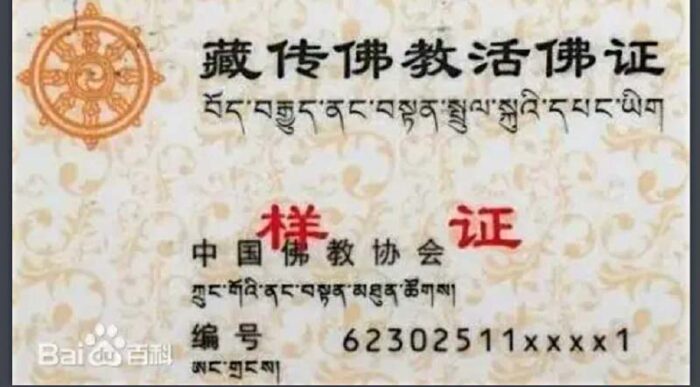
A Chinese state media sample of “Tibetan Buddhism Living Buddha Certificate”.
- The 2016 “Tibetan Buddhism Living Buddha Inquiry System” launched by the BAC to verify legitimacy of reincarnations. In January 2016, the database started with 870 names, while in April the same year, it increased to 1,300. Notably, the Dalai Lama is not listed in this database.
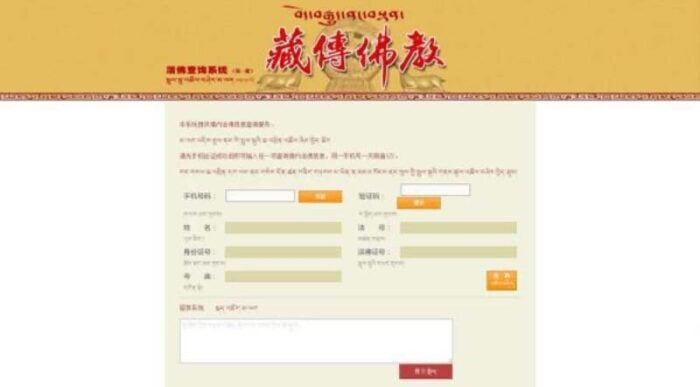
A screenshot of the “Tibetan Buddhism Living Buddha Inquiry System” website.
- The “Revised Religious Affairs Regulations” (Order No. 686) passed by the State Council on June 14, 2017 that came into force on Feb. 1, 2018. It mandates that the religious community shall “practice the core socialist values; and preserve the unification of the country, ethnic unity, religious harmony and social stability.”
- The “Measures for the Administration of Religious Clergy” (Order No. 15) passed by SARA on Jan. 8, 2021, regulating the administration of religious clergy.[32] The measures, which came into force on May 1, 2021, standardize state management of clergy to serve the ideological and political interests of the state and legally underpins the “Sinification” of religion policy in China. Article 15 in the regulation explicitly reaffirms the state’s role in management and approval of Tibetan reincarnate lamas.
- “Administrative Measures for Religious Activity Venues” (Order No. 19) that came into force on Sept. 1, 2023 that also repealed Order No. 2 of the 2005 “Measures for Approval and Registration of the Establishment of Places of Religious Activities.”[33] The measures not only place all religions as subservient to the CCP but also mandates that they implement Xi Jinping thought. Article 3 says:
Places of religious activity shall uphold the leadership of the CCP and the socialist system, thoroughly implement Xi Jinping’s ideology of socialism with Chinese characteristics for the new era, abide by the Constitution, laws, rules and regulations and relevant provisions on the management of religious affairs, practice core socialist values, adhere to the direction of Sinification of China’s religions, adhere to the principle of independence, autonomy and self-sufficiency, and safeguard the unity of the country, national unity, religious harmony and social stability.
WHAT ROLE FOR TIBETANS INSIDE THE NATIONAL PARKS?
The CCP has introduced the following measures, regulations and initiatives to exercise control over the recognition of reincarnations. In 2019, the Chinese spokesperson responded to the Dalai Lama’s assertion about his authority to decide on his reincarnation by saying that the process would have to be as per Chinese law.
- The “Management Measures for the Reincarnation of Living Buddhas in Tibetan Buddhism” (Order No. 5) passed by the State Administration of Religious Affairs—also known as National Religious Affairs Administration in English—on July 18, 2007, that came into force on Sept. 1, 2007.[31] It articulates in detail the selection, installation and education of reincarnate lamas. The regulations are aimed at ensuring that layers of control are the same both in the Tibet Autonomous Region and all other Tibetan areas now incorporated into the People’s Republic of China.
- The 2010 “Tibetan Buddhism Living Buddha Certificates” provided by the BAC to reincarnations who have been approved by the Chinese government. The certificate, which is the size of an ID card, includes the lay name, religious name, sect and name of monastery to which the individual belongs. Each certificate has a unique 14-digit number, the China selected Panchen Lama’s certificate number being 54230111100000.
* * * * * * *
* * * * * * * * * * * * * *
PHOTO: A Chinese state media sample of “Tibetan Buddhism Living Buddha Certificate”
* * * * * * * * * * * * * *
* * * * * * * - The 2016 “Tibetan Buddhism Living Buddha Inquiry System” launched by the BAC to verify legitimacy of reincarnations. In January 2016, the database started with 870 names, while in April the same year, it increased to 1,300. Notably, the Dalai Lama is not listed in this database.
* * * * * * *
* * * * * * * * * * * * * *
PHOTO: A screenshot of the “Tibetan Buddhism Living Buddha Inquiry System” website
* * * * * * * * * * * * * *
* * * * * * * - The “Revised Religious Affairs Regulations” (Order No. 686) passed by the State Council on June 14, 2017 that came into force on Feb. 1, 2018. It mandates that the religious community shall “practice the core socialist values; and preserve the unification of the country, ethnic unity, religious harmony and social stability.”
- The “Measures for the Administration of Religious Clergy” (Order No. 15) passed by SARA on Jan. 8, 2021, regulating the administration of religious clergy.[32] The measures, which came into force on May 1, 2021, standardize state management of clergy to serve the ideological and political interests of the state and legally underpins the “Sinification” of religion policy in China. Article 15 in the regulation explicitly reaffirms the state’s role in management and approval of Tibetan reincarnate lamas.
- “Administrative Measures for Religious Activity Venues” (Order No. 19) that came into force on Sept. 1, 2023 that also repealed Order No. 2 of the 2005 “Measures for Approval and Registration of the Establishment of Places of Religious Activities.”[33] The measures not only place all religions as subservient to the CCP but also mandates that they implement Xi Jinping thought. Article 3 says:
Places of religious activity shall uphold the leadership of the CCP and the socialist system, thoroughly implement Xi Jinping’s ideology of socialism with Chinese characteristics for the new era, abide by the Constitution, laws, rules and regulations and relevant provisions on the management of religious affairs, practice core socialist values, adhere to the direction of Sinification of China’s religions, adhere to the principle of independence, autonomy and self-sufficiency, and safeguard the unity of the country, national unity, religious harmony and social stability.
FRAMEWORK GOVERNING RECOGNITION OF REINCARNATIONS
Below is a partial list of Tibetan lamas who hold leadership positions at both the national and provincial levels of the BAC. It can be assumed that these Tibetan lamas are among those who are being involved either directly or indirectly by the Chinese government on matters relating to Tibetan Buddhism, including in the search process for reincarnations at all levels.
The majority of them are from the Gelug lineage (at the national level, the honorary president and seven of the eight vice presidents) and belong to monasteries located in eastern and northeastern Tibet, areas that are outside the Tibet Autonomous Region. Four of the nine lamas are 70-plus years of age. Some of them have the title of “Huthoktu,” which is the second-highest level among reincarnations under the Tibetan government of the past. According to lama-scholar Dhungkar Lobsang Thinley, this title was bestowed by emperors of China, the Dalai Lama or the Panchen Lama in the past.
While Phakpalha Gelek Namgyal might be seniormost in terms of the Chinese official hierarchy, he is past 80 and sources in Tibet say he is not in good health. The Jamyang Shepa is likely the seniormost in the religious hierarchy, while Tsemonling Tenzin Thinley is the one with historical importance, given that he comes from one of the four traditional monasteries around Lhasa (called the four “lings” after their name: Tsemonling, Tengyeling, Shideling, and Kundeling) that have had their lamas become regents at different times during the absence of the Dalai Lamas. In terms of current politics, one of them, Drupkhang Thubten Khedrup, is among those most vocal in voicing CCP positions and has been sent abroad several times as part of official Chinese delegations. The China-selected Panchen Lama is the one with the most political value in the coming years, in terms of his age and the title he has been given. Interestingly, two of them have direct connections with prominent lamas living in exile. One of them (Sharnor Zhongba) was recognized by the 17th Karmapa, while the enthronement of another (Sertri Choekyi Lodoe Gyatso) was presided over by Arjia Rinpoche.
Quite a few of them are also heads of the Tibetan Buddhist institutes in their region (mentioned earlier in this report) or have leadership positions in their monastery’s democratic management committee, the CCP-imposed entity that ensures that the monasteries comply with party ideology. In the CCP reincarnation selection process, the democratic management committee has been used as a primary “applicant” on behalf of the monastery for search and recognition of reincarnations.
TIBETAN BUDDHIST LAMAS IN THE BAC
Below is a partial list of Tibetan lamas who hold leadership positions at both the national and provincial levels of the BAC. It can be assumed that these Tibetan lamas are among those who are being involved either directly or indirectly by the Chinese government on matters relating to Tibetan Buddhism, including in the search process for reincarnations at all levels.
The majority of them are from the Gelug lineage (at the national level, the honorary president and seven of the eight vice presidents) and belong to monasteries located in eastern and northeastern Tibet, areas that are outside the Tibet Autonomous Region. Four of the nine lamas are 70-plus years of age. Some of them have the title of “Huthoktu,” which is the second-highest level among reincarnations under the Tibetan government of the past. According to lama-scholar Dhungkar Lobsang Thinley, this title was bestowed by emperors of China, the Dalai Lama or the Panchen Lama in the past.
While Phakpalha Gelek Namgyal might be seniormost in terms of the Chinese official hierarchy, he is past 80 and sources in Tibet say he is not in good health. The Jamyang Shepa is likely the seniormost in the religious hierarchy, while Tsemonling Tenzin Thinley is the one with historical importance, given that he comes from one of the four traditional monasteries around Lhasa (called the four “lings” after their name: Tsemonling, Tengyeling, Shideling, and Kundeling) that have had their lamas become regents at different times during the absence of the Dalai Lamas. In terms of current politics, one of them, Drupkhang Thubten Khedrup, is among those most vocal in voicing CCP positions and has been sent abroad several times as part of official Chinese delegations. The China-selected Panchen Lama is the one with the most political value in the coming years, in terms of his age and the title he has been given. Interestingly, two of them have direct connections with prominent lamas living in exile. One of them (Sharnor Zhongba) was recognized by the 17th Karmapa, while the enthronement of another (Sertri Choekyi Lodoe Gyatso) was presided over by Arjia Rinpoche.
Quite a few of them are also heads of the Tibetan Buddhist institutes in their region (mentioned earlier in this report) or have leadership positions in their monastery’s democratic management committee, the CCP-imposed entity that ensures that the monasteries comply with party ideology. In the CCP reincarnation selection process, the democratic management committee has been used as a primary “applicant” on behalf of the monastery for search and recognition of reincarnations.
TIBETANS IN BUDDHIST ASSOCIATION OF CHINA NATIONAL COMMITTEE
HONORARY PRESIDENT
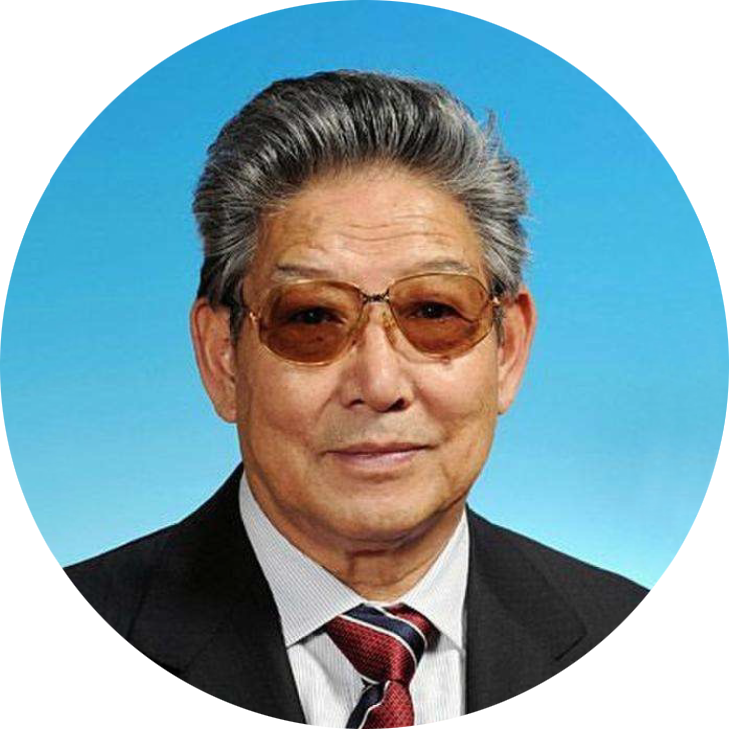 |
Phakpalha Gelek Namgyal (Chinese: Pabala Gelie Langjie). Born in 1939 in Lithang (Litang), he was recognized as a lama of the Jampaling Gelug monastery in Chamdo (Changdu) by then-Tibet Regent Taktra Rinpoche. Popularly known as Chamdo Phakpalha, his full name is Tenzin Jigme Gelek Namgyal, which was given to him by the then-young 14th Dalai Lama, according to lama-scholar Dhungkar Lobsang Thinley. He has been involved with the BAC since 1980. Phakpalha is also honorary president of the TAR BAC and is the oldest among the reincarnated Tibetan lamas working under the Chinese system. | Current political position: Vice-chairman of 14th CPPCC National Committee and chairman of CPPCC TAR Regional Committee. Phakpalha has been on and off in these positions since the 1970s. |
VICE PRESIDENTS
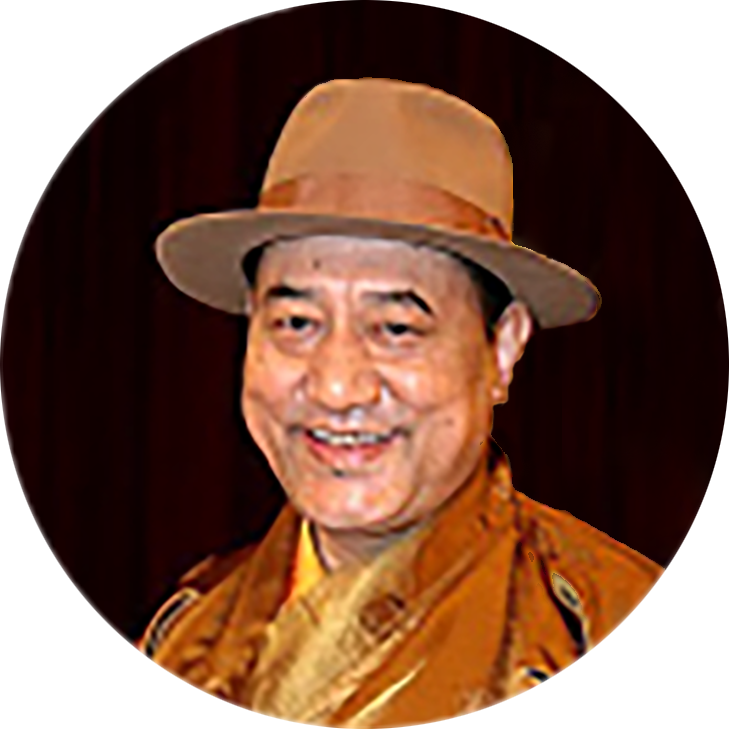 |
Shodruk Kyabgon Jamyang Palden Dorjee (Xianggen Badeng Duoji). Born in 1949 in Lithang, he is the head of Jamchen Choekhorling Gelug monastery in Lithang. Popularly known as the Lithang Kyabgon, a title signifying a superior status, he has been involved with the BAC since the 1960s, first in Sichuan and then in Beijing. He is honorary president of the Sichuan Buddhist Association. | Current political position: Member of the 14th National Committee of CPPCC. |
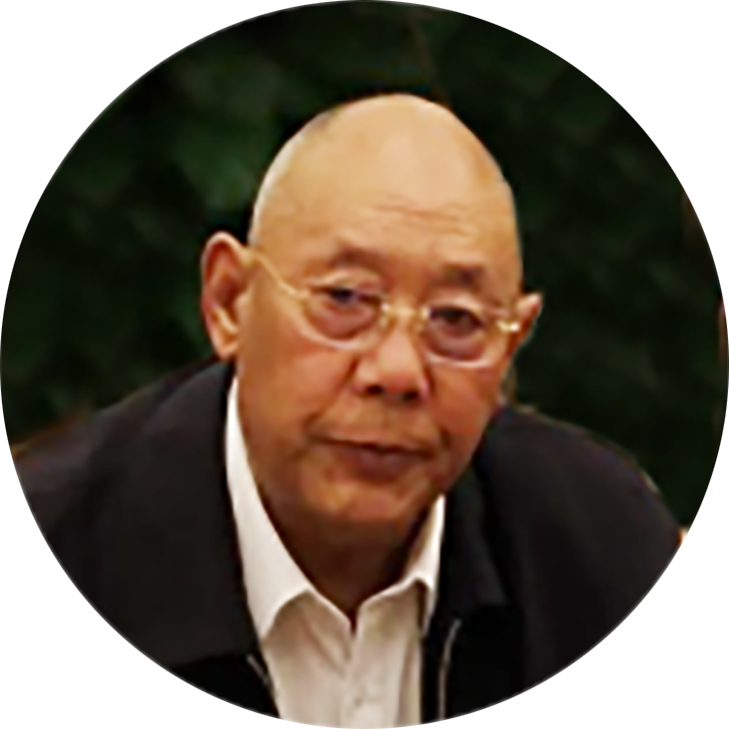 |
Jamyang Shepa Lobsang Jigme Thupten Choekyi Nyima (Jiamu Yang Luosang Jiumei Tudan Queji Nima). Born in 1948 in Kangtsa (Gangcha) county in Qinghai province, he was recognized by the 10th Panchen Lama as the head lama of Labrang (Labuleng) Tashikyil Gelug Monastery in Kanlho (Gannan) Tibetan Autonomous Prefecture in Gansu. He has been involved with the BAC since 1962. He is the head of the Steering Committee for Awarding Academic Ranks in Tibetan Buddhism and dean of the High-level Tibetan Buddhism College of China in Beijing. He is president of the Buddhist Association of Gansu and president of Gansu Buddhist Academy. | Current political position: He is member of the Standing Committee of the 14th NPC and deputy director of the Standing Committee of the 14th Gansu Provincial People’s Congress. |
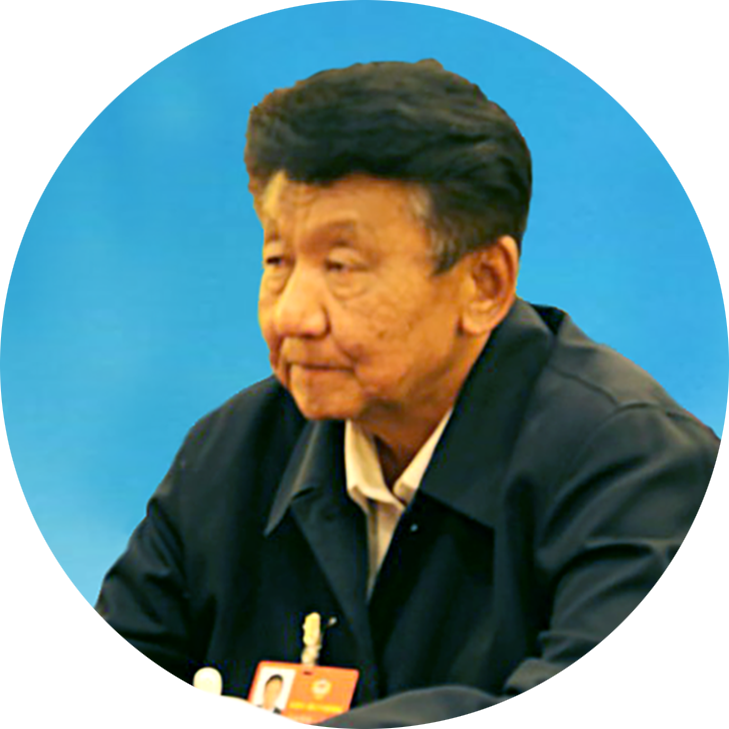 |
Tsemonling Tenzin Thinley (Cemo Lin Danzeng Chilie). Born in 1950 in Lhasa, he was enthroned as reincarnation of the head of Tsemonling Gelug monastery in 1955. One of his previous incarnations had served as Gaden Tripa, head of the Gelug lineage, as well as the regent of Tibet. He has been involved with the BAC since 1980. | Current political position: Member of the 14th CPPCC National Committee and vice chairman of the TAR CPPCC. |
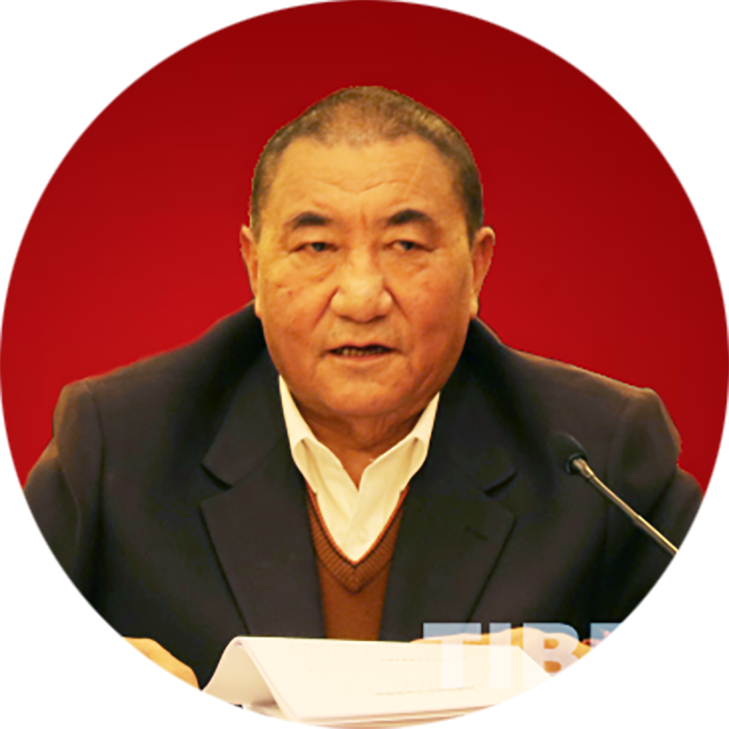 |
Drupkhang Thubten Khedrup (Trukang Thupden Kheldo or Zhukang Tubdankezhub). Born in 1955 in Nagchu (Naqu) in the Tibet Autonomous Region, he was recognized as the lama of Shabten (Shodain) Gelug monastery in Nagchu in 1958. He is dean of the High-level Tibetan Buddhist College near Lhasa. He is a deputy director of the Steering Committee for Awarding Academic Ranks in Tibetan Buddhism. Although he underwent imprisonment by the Chinese authorities, after his release in 1979, he has been a vocal critic of the Dalai Lama. He has been involved with the BAC since 1982, beginning with the Nagchu unit. | Current political position: Member of the standing committee of the 14th CPPCC National Committee and Vice Chairman of the TAR’s CPPCC. |
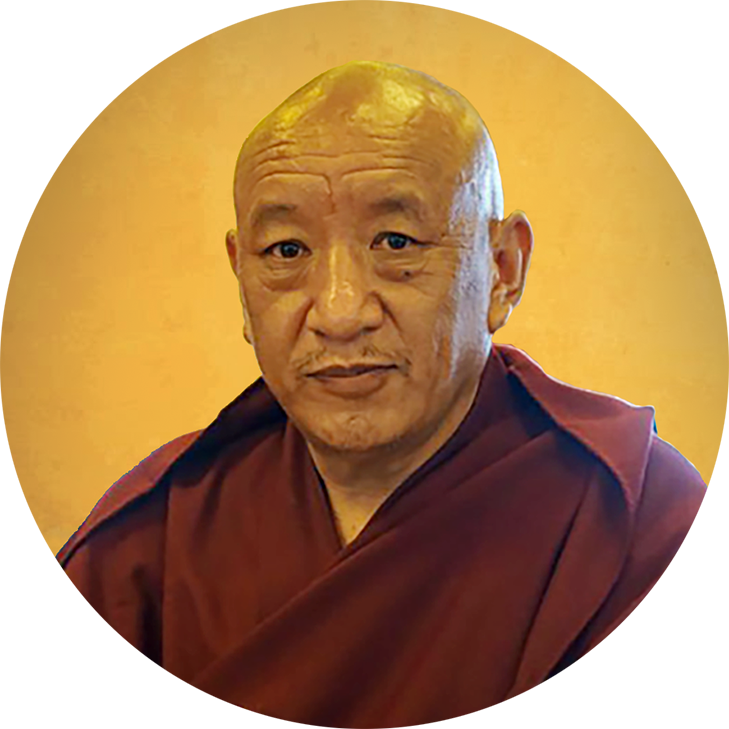 |
Tashi Gyaltsen (Zhaxi Jiancai). Born in 1962, he became a monk of Sera Monastery in Lhasa in 1983. He is vice president of the TAR BAC, president of the Lhasa BAC, vice president of the High-level Tibetan Buddhist College. He had earlier served as deputy secretary-general of the BAC. He is a teacher at Sera. In 2015, the year he was first involved with the BAC, Chinese state media quoted him as responding thus when talking about what qualities outstanding religious talents should possess: “Generally speaking, patriotism and love of religion are the most basic.” | Current political position: Member of the 14th CPPCC National Committee and deputy director of Sera Monastery Management Committee. |
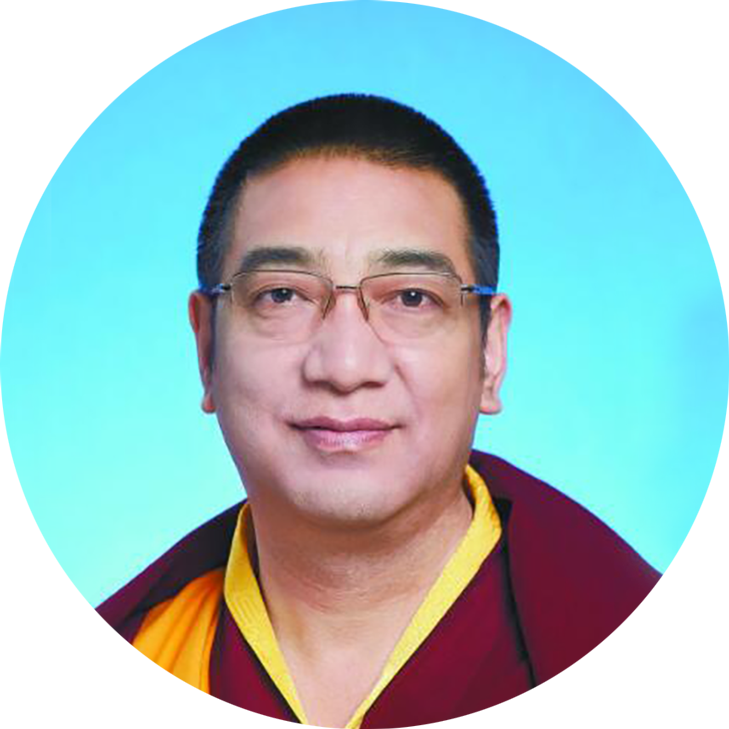 |
Sertri Choekyi Lodoe Gyatso (Saichi Queji Luozhi Jiacuo). Born in 1968 in Taktsang under Hualong Hui Autonomous County in Qinghai, he is a lama of Lamo Dechen Choekhorling Gelug monastery in Chentsa (Jianzha) under Malho (Huangnan) prefecture. Lamo Dechen is a historically important monastery in the Amdo region. He initially became a monk of Lamo Dechen monastery before being recognized as a reincarnation of Lamo Sertri in 1993. It is said that this monastery has historical connections to the Lamo Tsangpa Oracle, one of the oracles invoked by the Dalai Lama. He has been involved with the BAC since 2010. | Current political position: Member of the 14th CPPCC National Committee and vice chairman of the Qinghai CPPPC. |
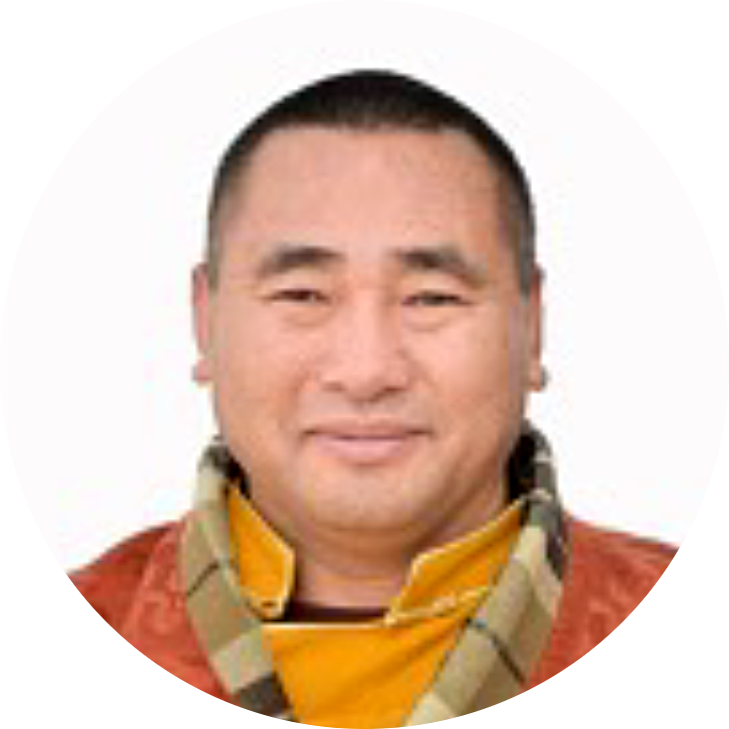 |
Sharnor Trungpa (Dongbao Zhongba). Born in 1968 in Gyezur (Jiulong) in Kardze Tibetan Autonomous Prefecture, he was reportedly recognized by Tai Situ Rinpoche, a prominent lama in exile, as a reincarnation of a Kagyu master and has his Karma Namgyaling (Zhiyun) Kagyu monastery in Lijiang, Yunnan. He has been involved with the BAC since 2015. He is vice president of the Yunnan BAC. | Current political position: Member of the 14th CPPCC National Committee. |
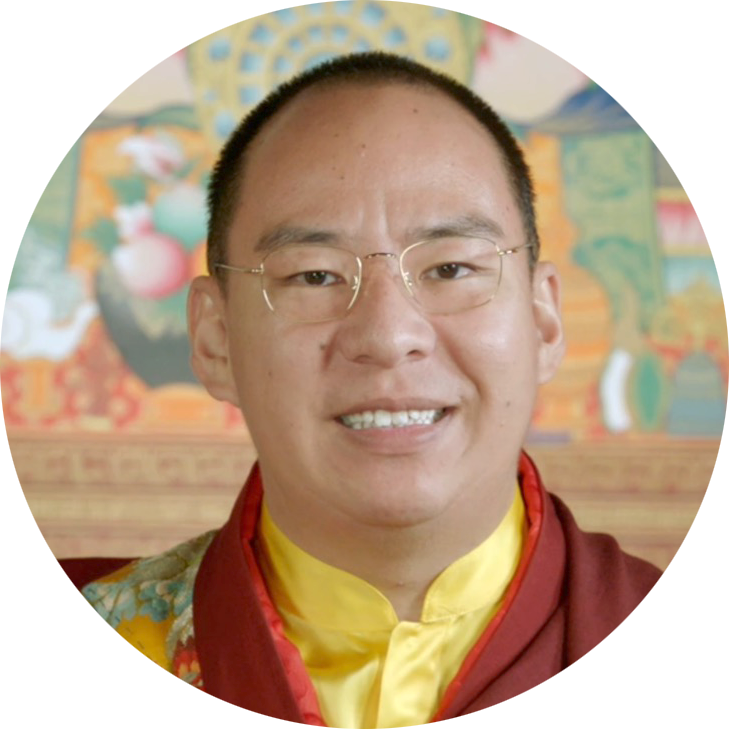 |
China-selected Panchen Gyaltsen Norbu. He was born in 1990 and has been involved with the BAC since 2010. He is president of the TAR BAC. | Current political position: Member of the standing committee of the 14th CPPCC National Committee and vice president of the CPPCC. |
TIBETANS IN BAC ADVISORY COMMITTEE
VICE CHAIRMAN
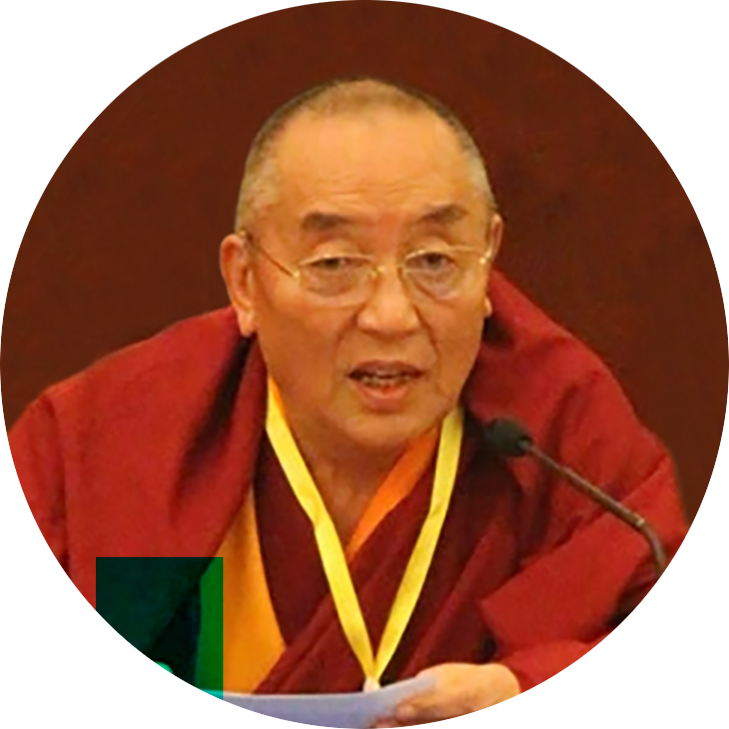 |
Naktsang Jampa Ngawang (Nacang Xiangba Angweng). Born in 1940 in Kardze and recognized in 1943 as the reincarnation of the head of Naktsang Gelug monastery in Serchuteng (Sexidi). He studied in Ganden Monastery in Lhasa. He suffered imprisonment in the wake of the Chinese takeover of Tibet and was released in 1979. He has been involved with the BAC since 1993. | Current political position: None specified. |
BAC ADVISORY COMMITTEE MEMBERS
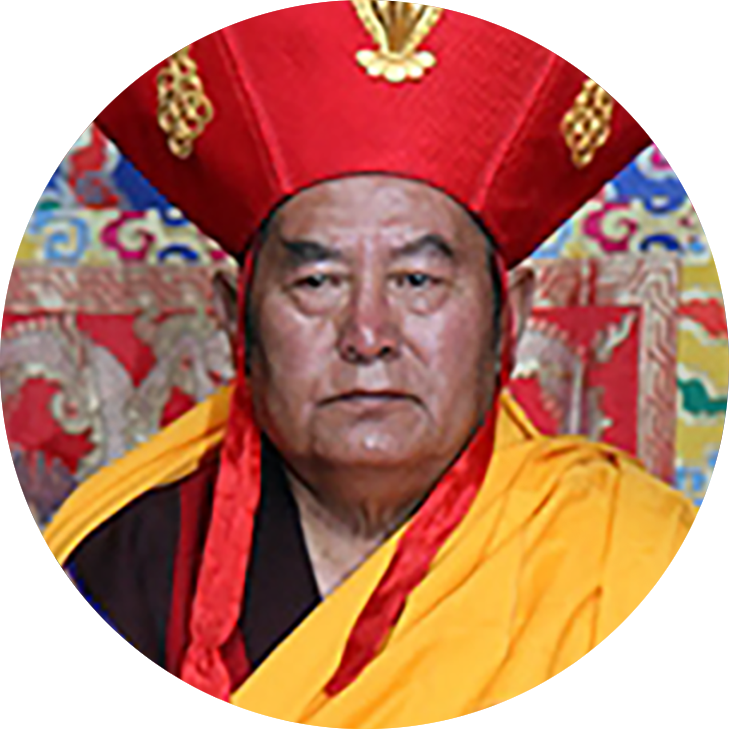 |
Drikung Chungtsang Lobsang Jampa (Zhikong Qiongcang). Born in 1942 in Lhokha (Shannan), the TAR, in the aristocratic Lhagyari family. In 1946, he was recognized as one of the two heads of the Drikung Kagyu lineage of Tibetan Buddhism. In 1959, he was imprisoned and was released only in 1982. He had traveled twice to India, in 1985 and 1992, including during the inauguration of the Jangchubling monastery constructed by the other head of the lineage, Drikung Kyabgon Chetsang, in Dehradun, northern India. | Current political position: Member of the 14th CPPCC National Committee. |
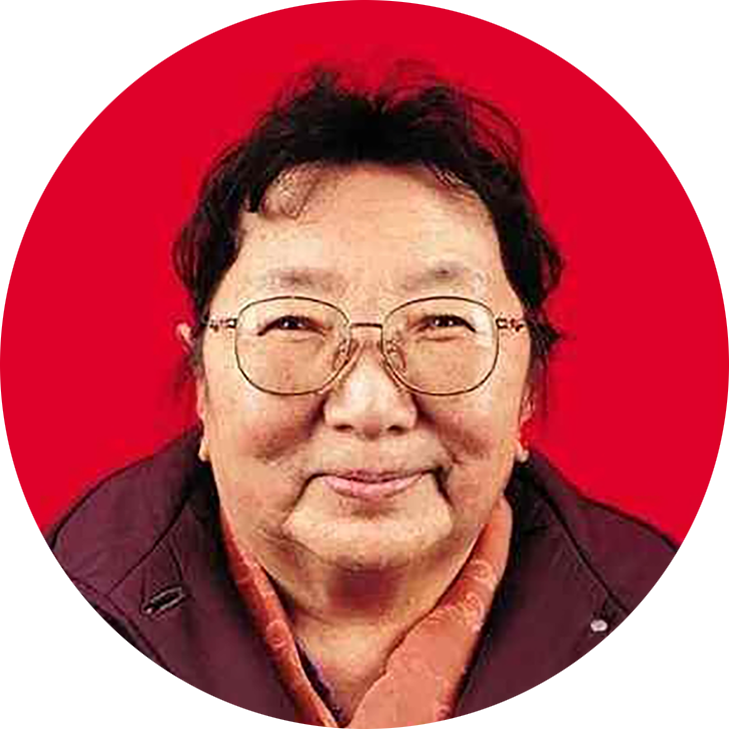 |
Samding Dorje Phakmo Dechen Choedon (Sangding Dorje Pamo Deqing Quzhen). Born in 1942 in Nyemo near Lhasa, she is among the few female reincarnations in Tibetan Buddhism. She is the abbot of the Samdhing Kagyu monastery. Although she escaped from Tibet in early 1959, in September the same year, she returned, first residing in Beijing before going to her hometown in 1960. She thus became the first Tibetan refugee to return in the post-1959 period. She started being involved with the BAC in 1956. | Current political position: Vice chairperson of the All-China Women’s Federation. |
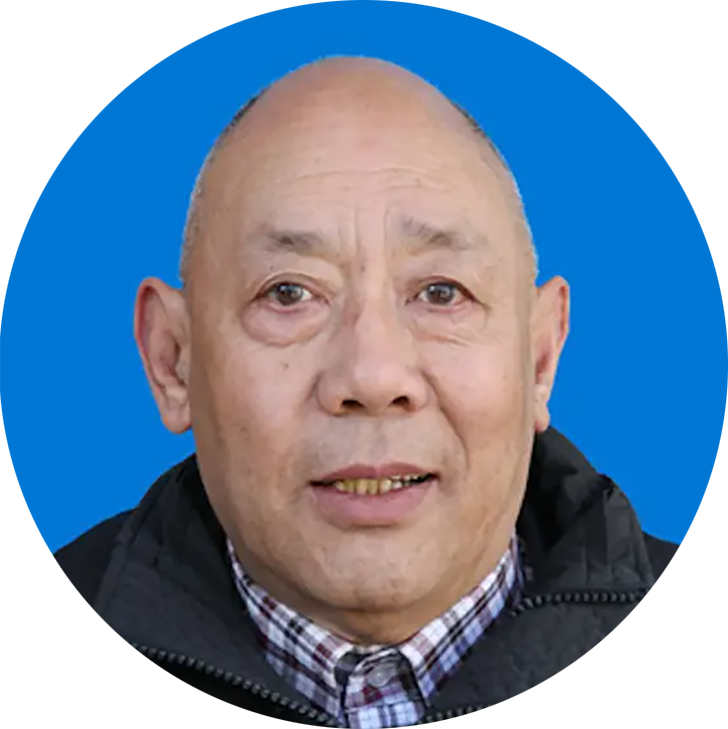 |
Jamyang Gyatso (Jiamu Yang Jiacuo). Born in Sangchu (Xiahe) in 1933, he is a monk of Labrang Tashikyil Gelug Monastery and also teaches at the Buddhist College of Gansu. Since 1998, he has been the teacher to the China-selected Panchen Lama. He was the first monk in Tibet to confer a Kalachakra initiation in the post-1959 period, which he did in June 2015. He has been involved with the BAC since 2002. | Current political position: None specified. |
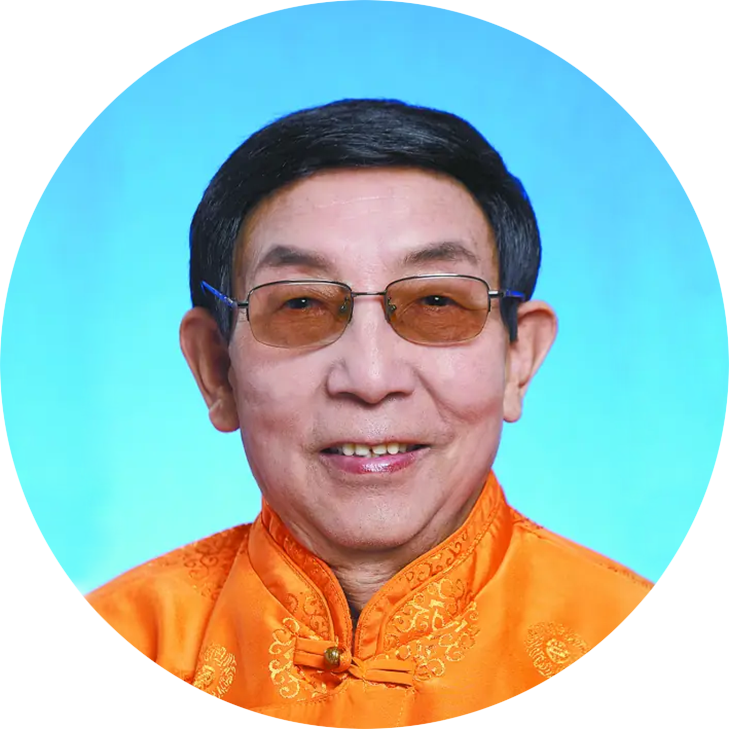 |
Rinchen Namgyal (Renqing Anjie). Born in 1952, he was recognized as a lama in 1953 by the president of the Qinghai Provincial Buddhist Association. He is a deputy director of the Steering Committee for Awarding Academic Ranks in Tibetan Buddhism. | Current political position: A vice chairman of the Qinghai provincial CPPCC. |
TIBETANS IN BAC TIBETAN BUDDHISM WORKING COMMITTEE MEMBERS
DIRECTOR
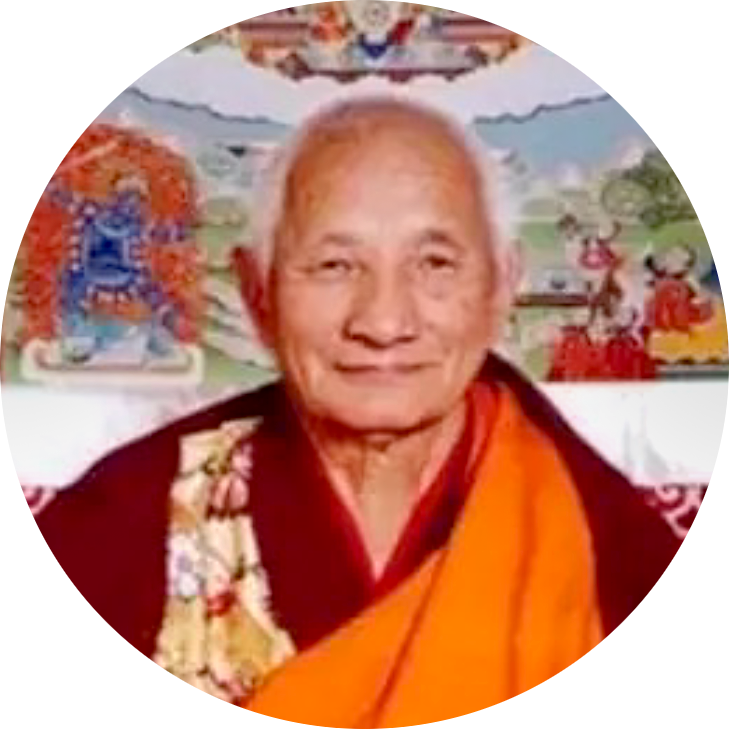 |
Gyalten Lobsang Jampa (Jiadeng Luorong Xiangba). Born in May 1946, he is a lama of Dhargye (Dajin) Gelug monastery in Kardze. He is vice president of the Sichuan Buddhist Association and president of Sichuan Tibetan Buddhist College. | Current political position: Deputy head of the Sichuan CPPCC Committee for Ethnic and Religious Affairs. He is also a delegate to the 14th National People’s Congress. |
BAC TWC DEPUTY DIRECTORS
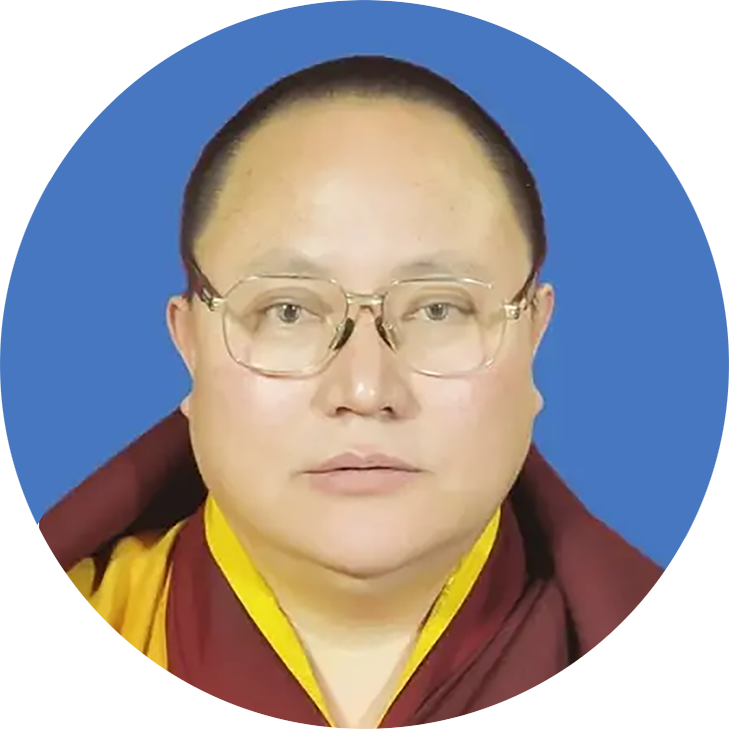 |
Taktsa Kalsang Thupten Lekshey Gyatso (Dazha Garang Tuobudan Laxi Jiangcuo). Born in July 1967 in Ngaba, he was recognized by Jamyang Shepa as a reincarnation in 1990 of the head of the Taktsa Tashi Choesang Gelug Monastery in the region. He has been involved with the BAC since 2007 and is being projected as a patriotic lama. He is president of Ngaba China Buddhist Association. | Current political position: Deputy chair of the Ngaba (Aba) Tibetan and Qiang Autonomous Prefecture people’s congress. |
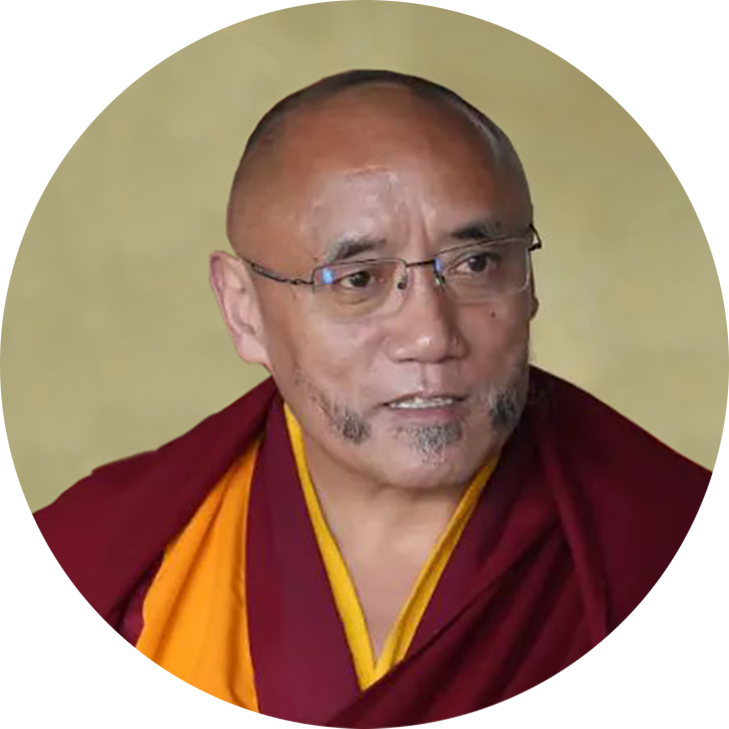 |
Lobsang Gyaltsen (Luosong Jiangcun). He is a senior monk of the Jampaling Gelug Monastery in Chamdo. | Current political position: Deputy director of the Democratic Management Committee of Jampaling Monastery. |
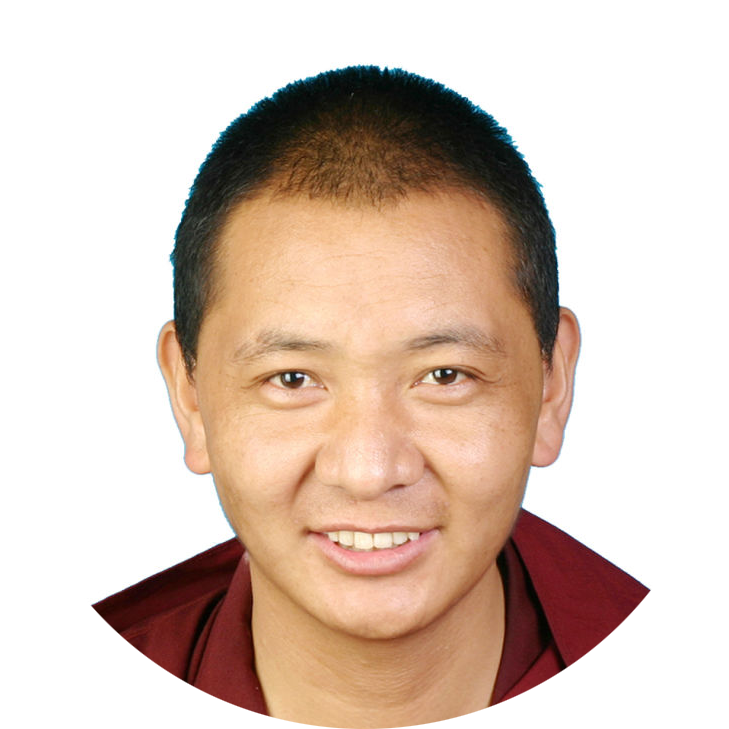 |
Jampa Thutop Senge (Tuduo Shenge). Born in 1972, he is a senior lama of the main Sakya monastery in Tibet. He joined the monastery at the age of 13 and in 2011, he was appointed as a teacher in the Tibetan Buddhist Academy. In 2015 he became the 47th Lhakhang Khenchen throne holder of Sakya Monastery. In 2016, he was appointed deputy dean of the High-level Tibetan Buddhism College in Beijing. | Current political position: None specified. |
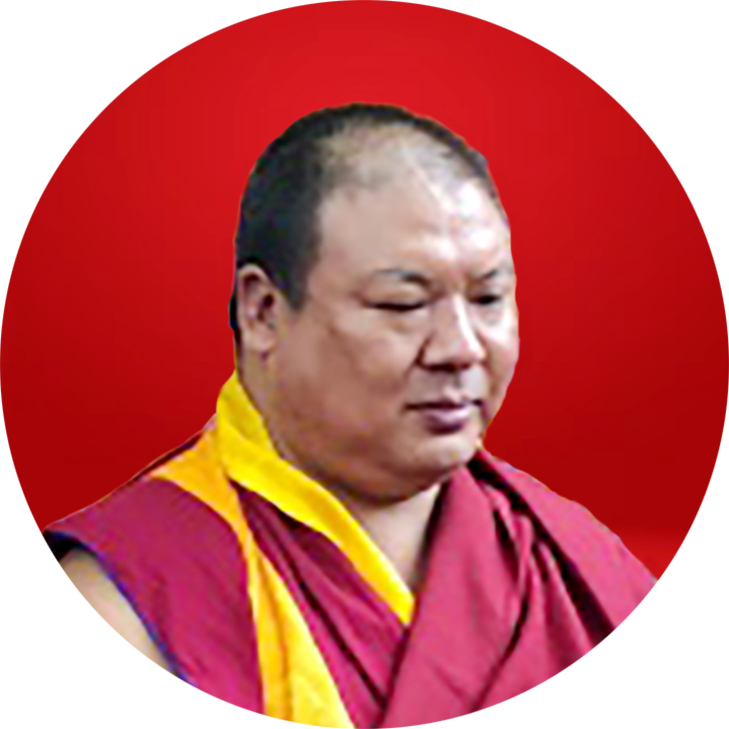 |
Rakho Lobsang Tenpay Wangchuk (Lako Luosang Danbei Aangxiu) is one of the lamas of Kumbum Jampaling Gelug Monastery, enthroned in 1996. In January 2022 he was among a select group of individuals commended by Xining City in “the list of advanced collectives and individuals for national unity and progress.” | Current political position: Director of Kumbum Monastery Management Committee. |
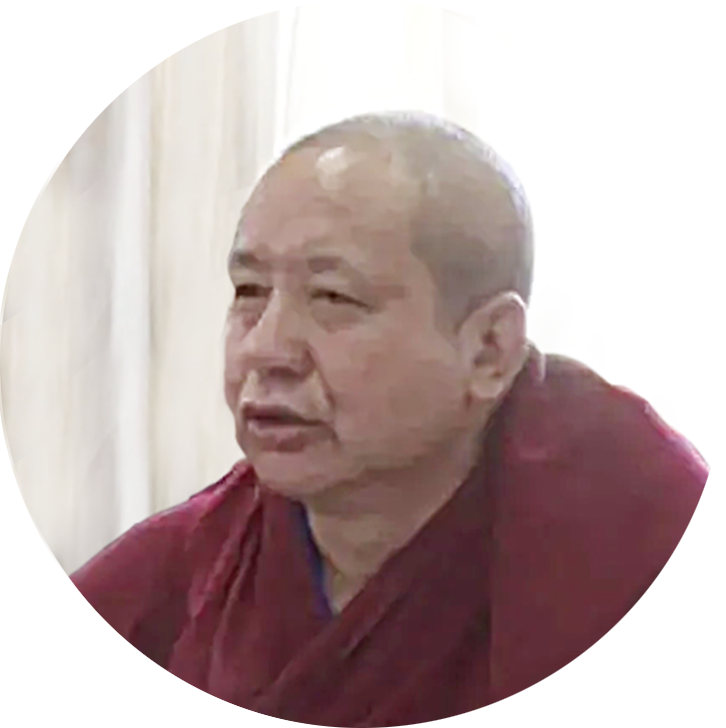 |
Kunchok Jinpa (Gongque Jinba). He is from Labrang Tashikhyil Gelug Monastery. | Current political position: Standing Committee Member of the 15th Sangchu (Xiahe) County Committee of the Chinese People’s Political Consultative Conference. |
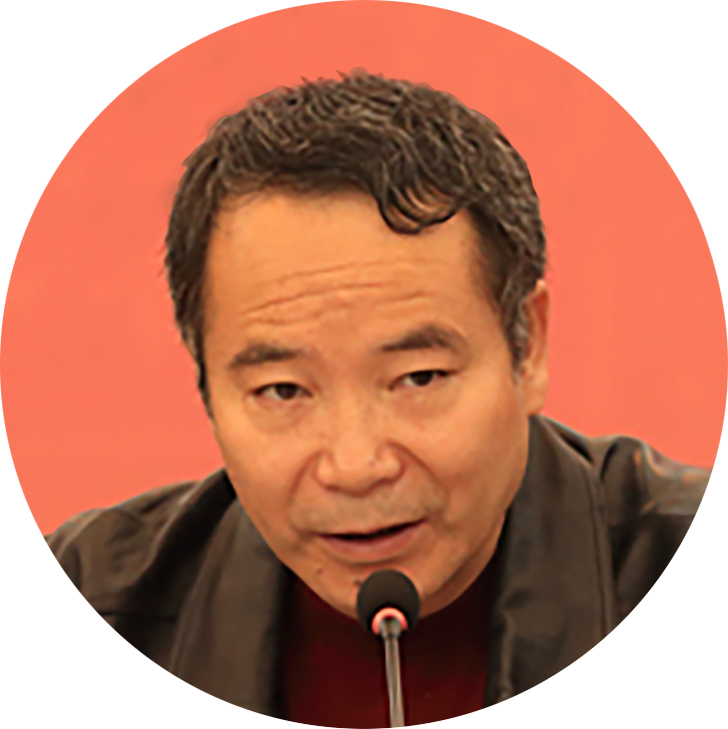 |
Sangye Tashi (Quan Boyin). He is director of the Office of Tibetan and Southern Buddhism of the BAC. | Current political position: None specified. |
TIBETANS IN BAC COMMITTEES IN THE TIBETAN AREAS
TIBET AUTONOMOUS REGION
| HONORARY PRESIDENT | ||
 |
Phakpalha Gelek Namgyal (see his details as a honorary president of BAC) | |
| PRESIDENT | ||
 |
China-selected Panchen Lama (see his details as a vice president of BAC) | |
| EXECUTIVE VICE PRESIDENTS | ||
 |
Drupkhang Thubten Khedrup (see his details as a vice president of BAC) | |
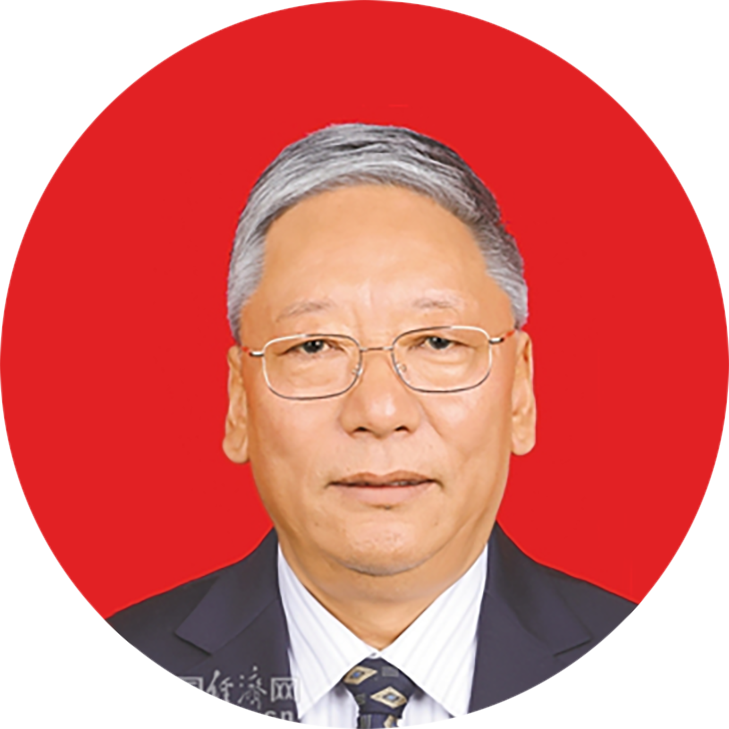 |
Sonam Rigzin (see party working secretary below) | |
TAR PARTY COMMITTEE
| WORKING SECRETARY | ||
 |
Sonam Rigzin (Soulang Renzeng). Born in 1959 in Rinpung (Renbu), near Shigatse, he joined the CCP in 1981. He served as the deputy head of the TAR United Front Work Department from 1998 to 2013 when he became a vice chair of the TAR CPPCC. In 2015 he was made a vice president of the TAR BAC. | |
LHASA CITY BAC
| PRESIDENT | ||
 |
Tashi Gyaltsen (See his information under BAC vice presidents) | |
SHIGATSE (XIGAZE) CITY
| PRESIDENT | ||
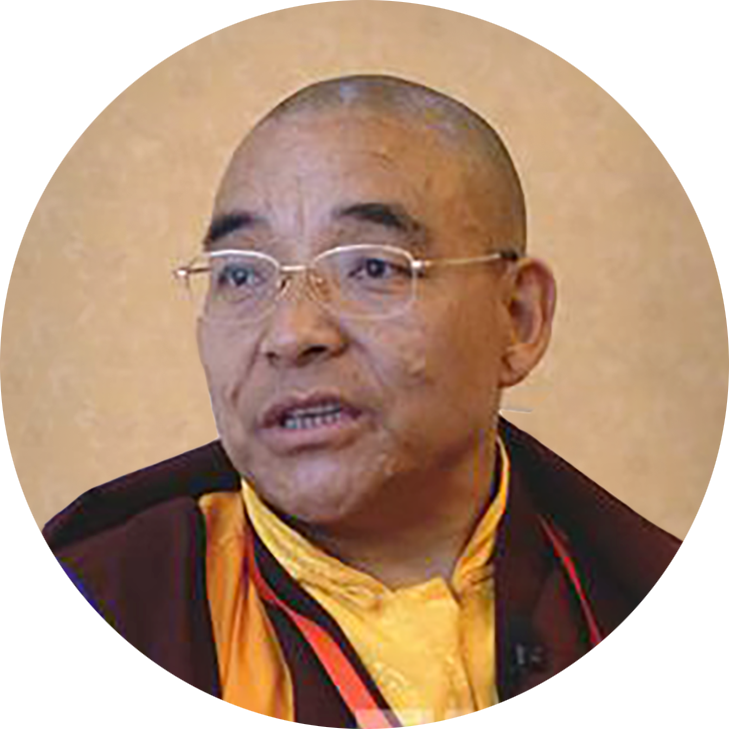 |
Palden Dhonyo (Bandian Dunyu). Born in 1965 in Sakya, he became a monk of Sakya monastery in 1984. He is abbot of Sakya Monastery and was a member of the fourth Tibetan Buddhist Academic Degree Work Steering Committee Member. | |
CHAMDO (CHANGDU) CITY
| PRESIDENT | ||
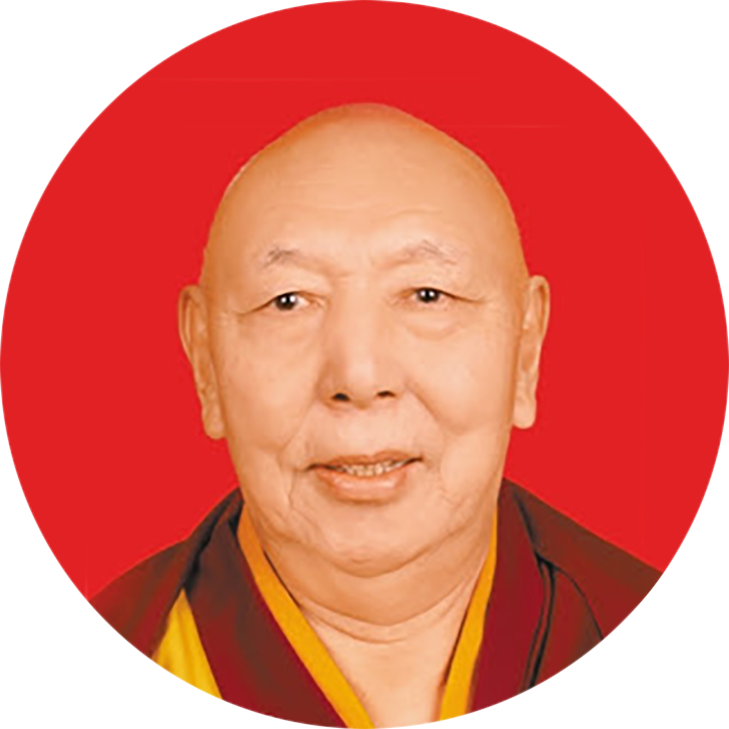 |
Zonglo Jampa Khedrup (Zongluo Xiangba Kezhu). Born in August 1940 in Chamdo, he is from the Jampaling Gelug monastery in Chamdo. In the wake of the Tibet-wide protests in 2008, he was named by the Chinese authorities as one of the ‘moral exemplars’ for their ideological and other work. | Current political position: A vice chair of the TAR CPPCC and First Director of the Jampaling Monastery Management Committee. |
LHOKHA (SHANNAN) CITY
| PRESIDENT | ||
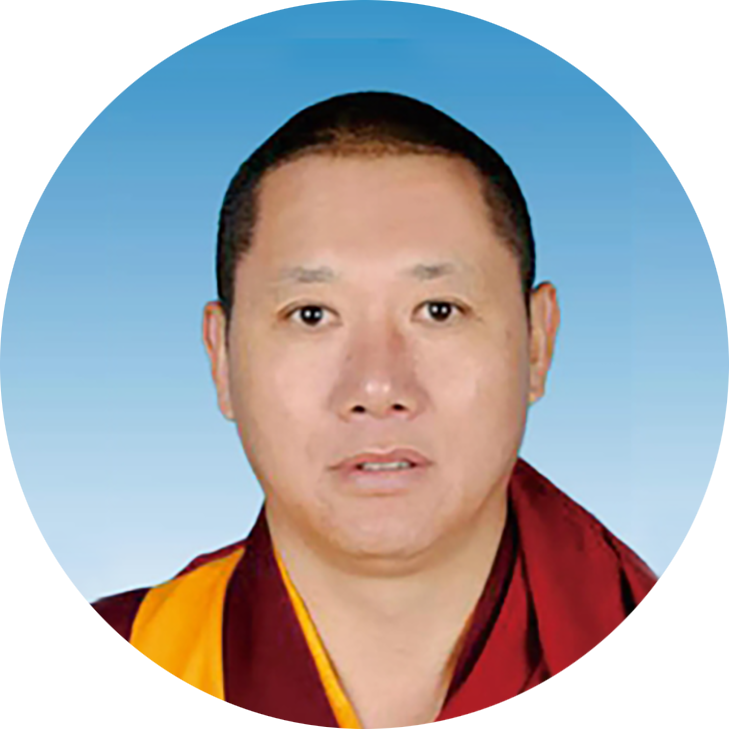 |
Dawa Tsering (Dawa Ciren) Born in 1965, he had served as a head of the Samye Monastery branch of the Tibet Buddhist Academy. | Current political position: Vice Chairman of the Lhokha City CPPCC. |
NYINGTRI (LINZHI) CITY
| PRESIDENT | ||
 |
Tathok Lobsang Yeshi (Datuo Luosang Yixi), He is a lama of Chuzom/Choezong (Quzong) Nyingma monastery in Kongpo, Nyingtri City. | Current political position: Member of the TAR CPPCC, member of the standing committee of Nyingtri CPPCC, vice chair of the Pome (Bomi) county CPPPCC. |
NGARI (ALI) TIBETAN AUTONOMOUS PREFECTURE
| HONORARY PRESIDENT | ||
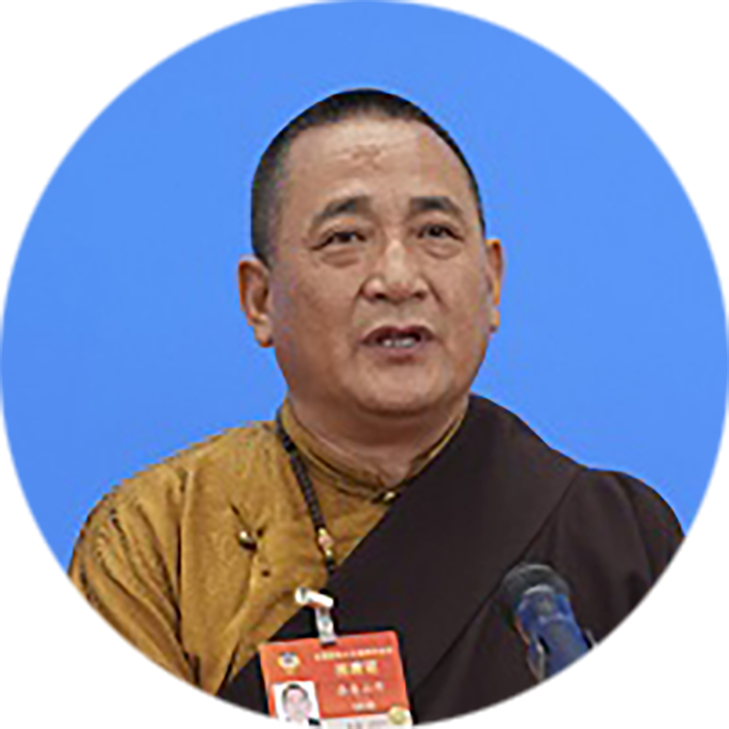 |
Lobsang Samten (Luosang Shandan). Born in 1964 in Hualong county of Qinghai, he went to Trugo Monastery near sacred Mapham Tso in Ngari, western Tibet, after becoming a monk. | Current political position: Member of the 14th CPPCC national committee; Vice Chairman of the Ngari CPPCC. |
| PRESIDENT | ||
 |
Jampa Tsondue | |
NAGCHU (NAQU) CITY
| PRESIDENT | ||
 |
Not specified | |
| VICE PRESIDENT | ||
 |
Dagpo Namgyal Wangchuk (Dabu Langjie Wangjiu), lama of Shugding Monastery in Shamchu (Xiangqu) Township, Driru County. | Current political position: A deputy to the 12th TAR People’s Congress. |
GANSU BAC
| PRESIDENT | ||
 |
Jamyang Shepa Lobsang Jigme Thupten Choekyi Nyima (See his information under BAC vice presidents) | |
KANLHO (GANNAN) TIBETAN AUTONOMOUS PREFECTURE
| PRESIDENT | ||
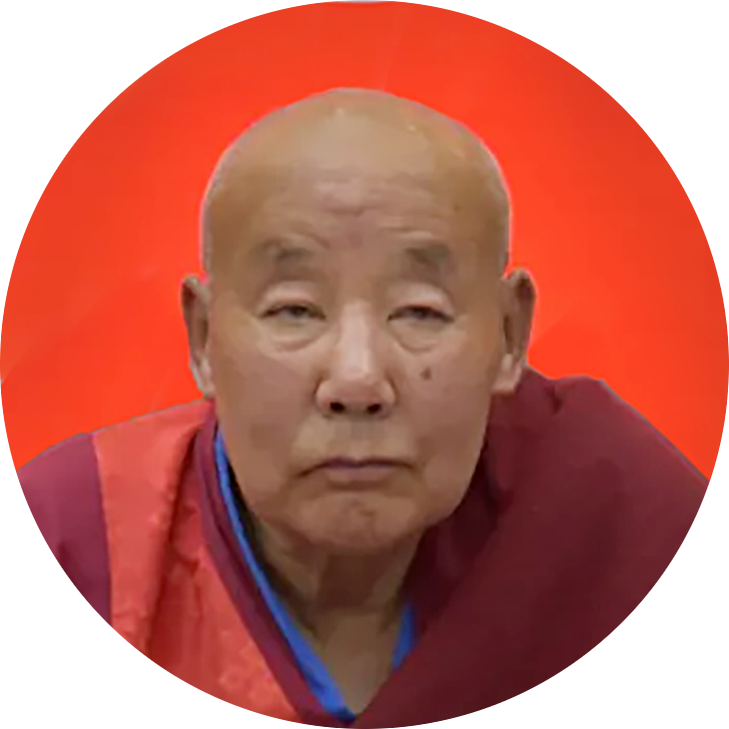 |
Dhuekhortsang (Ding Kecang). Born in 1950 in Sangchu (Xiahe) in Kanlho Prefecture. | Current political position: A vice chairman of the 15th Kanlho CPPCC. |
PARI (TIANZHU) TIBETAN AUTONOMOUS COUNTY
| PRESIDENT | ||
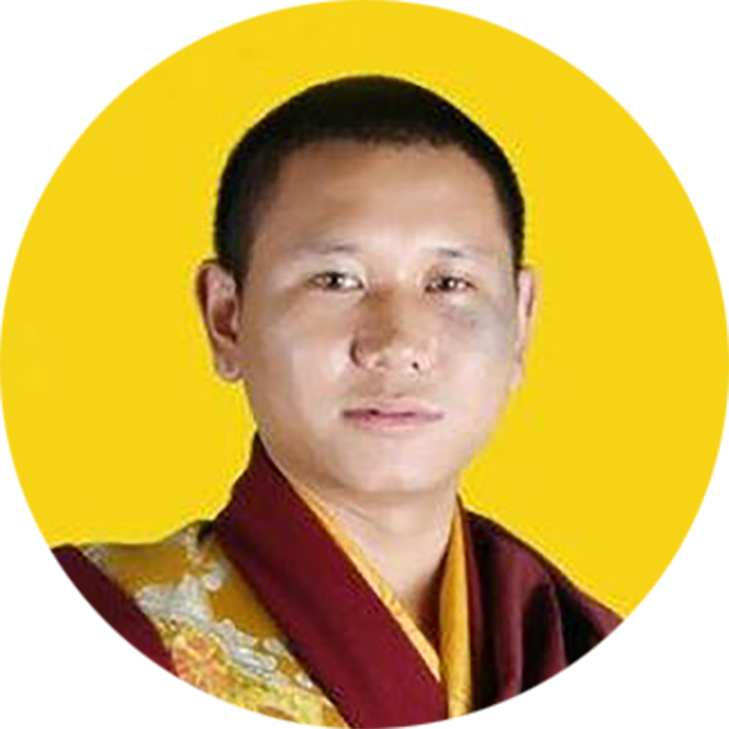 |
Lugya Khenpo Lobsang Thinley Gyatso (Lujia Kanbu). Born in 1983 in a Tibetan village under Sunan Yugu Autonomous County, he was recognized in 1992 by the Jamyang Shepa. | |
YUNNAN BAC
| PRESIDENT | ||
 |
Non-Tibetan | |
DECHEN (DIQING)TIBETAN AUTONOMOUS PREFECTURE
| PRESIDENT | ||
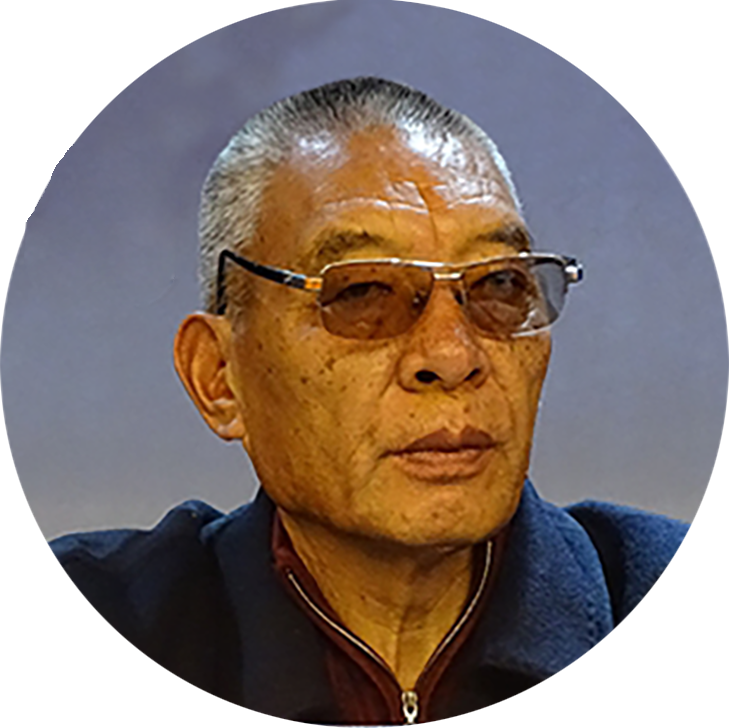 |
Shartse Tenzin Choephel (Shezi Danzeng Qunpei). Born in 1953 In Kontsera (Benzilan) Town in Dechen. | Current political position: Vice Chairman of the Diqing Prefecture CPPCC. |
| PARTY SECRETARY AND EXECUTIVE VICE PRESIDENT | ||
 |
Yang Jinhua. A Tibetan, born in 1970 and started working in CCP positions in Dechen Prefecture in 1995. He is a layman and a communist party member. | |
GYALTHANG (ZHONGDIAN AKA SHANGRI LA) TIBETAN AUTONOMOUS PREFECTURE
| PRESIDENT | ||
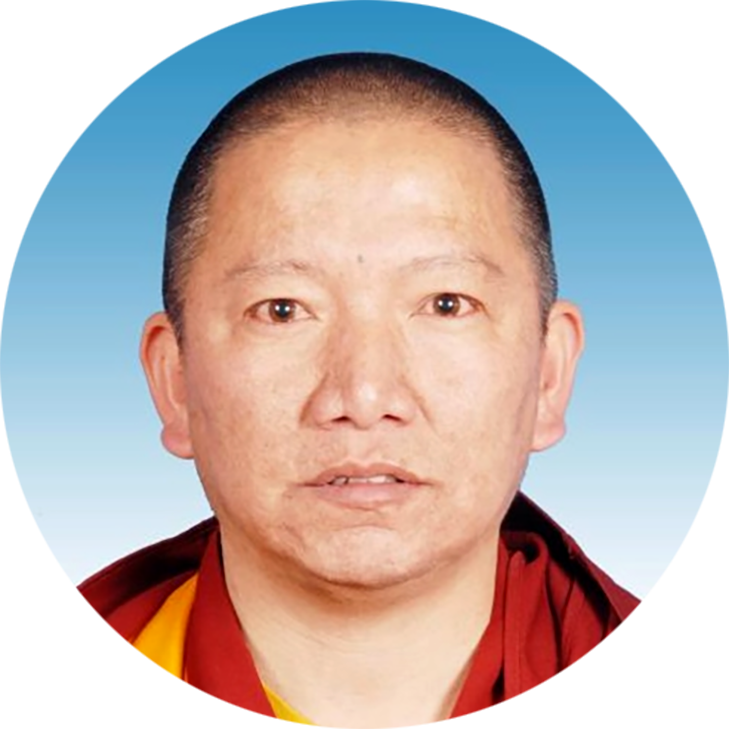 |
Khase Lobsang Choekyi Gyaltsen (Kesi Luosang Queji Jiangcun). Born in 1972 in Gyalthang and is a lama of Ganden Sumtsenling Gelug Monastery there. | Current political position: Vice chairman of the third session of the Gyalthang CPPCC Committee and Deputy to the 14th Yunnan Provincial People’s Congress. |
SICHUAN BAC
| PRESIDENT | ||
 |
Non-Tibetan | |
KARDZE (GANZI) TIBETAN AUTONOMOUS PREFECTURE
| HONORARY PRESIDENT | ||
 |
Shodruk Kyabgon Jamyang Palden Dorjee (See his information under BAC vice presidents) | |
| PRESIDENT | ||
 |
Gyalten Lobsang Jampa (See his information under Tibetan Buddhism Working Committee members) | |
NGABA (ABA) TIBETAN-QIANG AUTONOMOUS PREFECTURE
| PRESIDENT | ||
 |
Taktsa Kalsang Thupten Lekshey Gyatso (See his information under Tibetan Buddhism Working Committee members) | |
MILI (MULI) TIBETAN AUTONOMOUS COUNTY
| PRESIDENT | ||
 |
Not specified | |
QINGHAI BAC
| PRESIDENT | ||
 |
Rakho Lobsang Tenpay Wangchuk (See his information under Tibetan Buddhism Working Committee members) | |
GOLOG (GUOLUO) TIBETAN AUTONOMOUS PREFECTURE
| PRESIDENT | ||
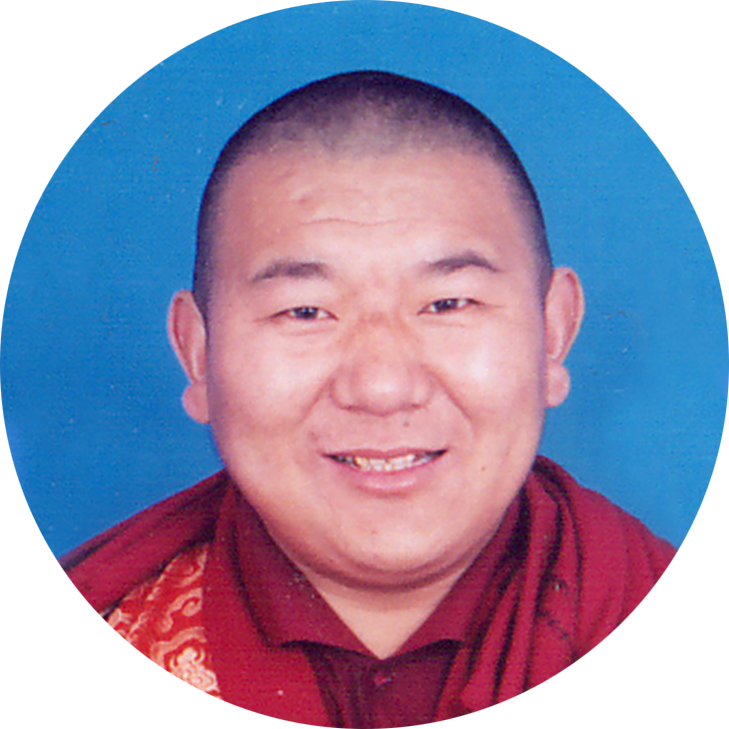 |
Gartul Yeshi Nyima (Gazhi Yexi Nima). Born in 1969 in Derge in Kardze Prefecture. | Current political position: Deputy Director of the Ethnic and Religious Committee of 13th CPPCC Qinghai Provincial Committee and deputy director of the Standing Committee of Golog People’s Congress. |
MALHO (HUANGNAN) TIBETAN AUTONOMOUS PREFECTURE
| PRESIDENT | ||
 |
Shar Kyabgon Tenzin Jigme Kalden Gyatso (Xiari Cang Danzeng Jiumei Gadan Jiancuo), lama of Dzongmar Gelug monastery in Tsekhok (Zeku) county. | |
TSOJANG (HAIBEI) TIBETAN AUTONOMOUS PREFECTURE
| PRESIDENT | ||
 |
Norwa Lobsang Tashi Gyatso (Nuoriwa Luosang Zhaxi JIancuo). Born in 1962 in Dhashi (Haiyan) county. | |
TSOLHO (HAINAN) TIBETAN AUTONOMOUS PREFECTURE
| PRESIDENT | ||
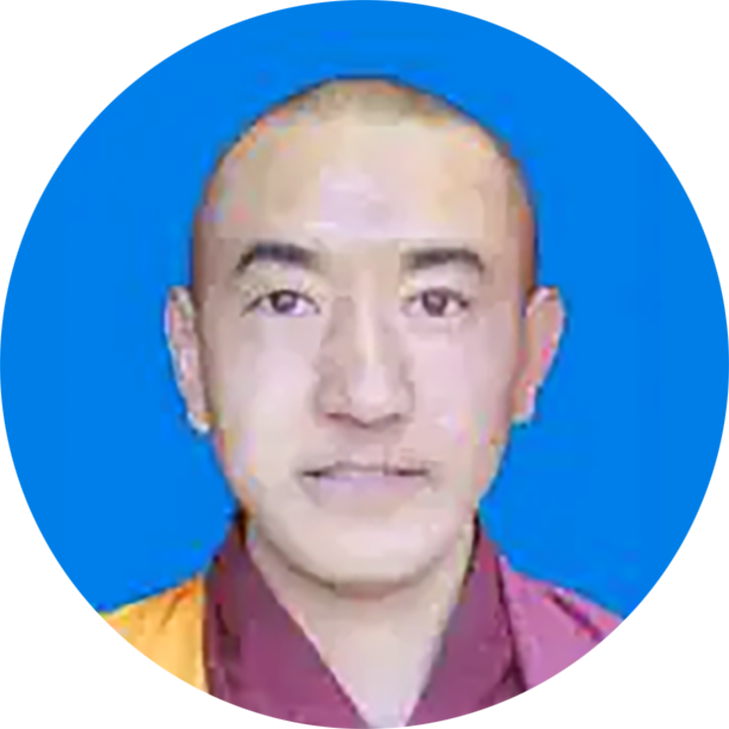 |
Kunsang Pema Namgyal (Gengzang Banma Nanjie). Born in 1968 in Dragkar (Xinghai) County and lama of Tingkya (Dangjia) Nyingma Monastery in Chabcha (Gungho) county. | Current political position: Member of the 13th CPPCC Qinghai Provincial Committee and Vice Chairman of the Tsolho CPPCC. |
YULSHUL (YUSHU) TIBETAN AUTONOMOUS PREFECTURE
| PRESIDENT | ||
 |
Not specified | |
TSOSHAR (HAIDONG) CITY
| HONORARY PRESIDENT | ||
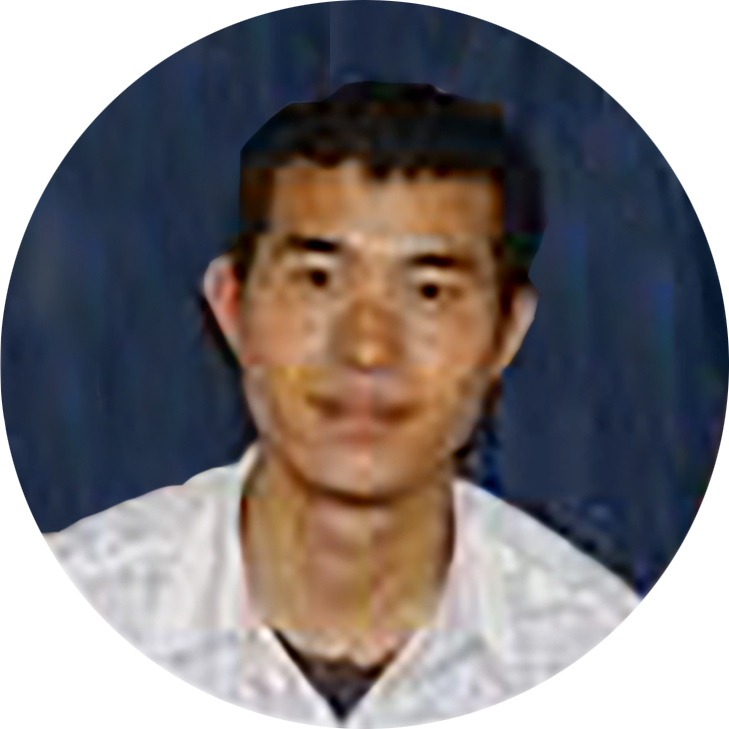 |
Tukan Jamyang Lobsang Tenpay Nyima (Tuguan Jiamu Yang Luosang Danbei Nima). Born in 1980 in Yazi (Xunhua) county and recognized in 1993 as the reincarnation of Tukan by the Jamyang Shepa. He was enthroned in Gonlung Jampaling Monastery. | |
| PRESIDENT | ||
 |
Chayi Lobsang Kunchok Samphel (Jiayi Luozang Gongque Sanpai). He is reported to be of Tu ethnicity. | Current political position: Member of the 13th CPPCC Qinghai Provincial Committee. |
[1] Academics and policy research analysts have employed various terms to depict the phenomenon of identity transformation in the People’s Republic of China. The selection of these terms depends on their respective interpretations of the process, considering historical perspectives, changes observed since the establishment of the People’s Republic, or the specific focus during Xi Jinping’s leadership. Depending on the author’s viewpoint, terms such as Sinicization, Sinification, Chinafication and Hanification have been utilized. For the purpose of this report, the term “Sinification” is adopted to describe the assimilationist approach and the reconstitution of identity during Xi Jinping’s administration.
[2] Chronicle of Zhao Puchu and Mao Zedong, Journal of Party History and Literature, https://www.mj.org.cn/hszl/hsgc/202310/t20231017_280854.htm
[3] Articles of Association of the Buddhist Association of China (Adopted by the 10th National Representative Conference of the Buddhist Association of China in Dec. 2020) https://web.archive.org/web/20240409200123/https://www.hbsfjxh.cn/article.html?id=6968112937445625856
[4] Even Taoists Are Being “Sinicized”: Shanghai Hosted the “First Forum on Sinicization of Taoism” He Yuyan, Bitter Wind, Aug. 8, 2023, https://bitterwinter.org/even-taoists-are-being-sinicized-shanghai-hosted-the-first-forum-on-Sinification-of-taoism/
[5] New Campaign for “Sinification of Buddhism” Starts in China, Zhao Zhangyong, Bitter Winter, Sept. 14, 2023, https://bitterwinter.org/new-campaign-for-Sinification-of-buddhism-starts-in-china/
[6] “Panchen Lama propagates Dharma and benefits living beings in Chamdo, Tibet” June 20, 2023,
China Tibet Network, https://web.archive.org/web/20240415175635/http://m.tibet.cn/cn/news/yc/202306/t20230620_7437800.html
[7] Seminar on the implementation of Sinification of Tibetan Buddhism in Sichuan, July 5, 2014, https://web.archive.org/web/20240506142006/https://ti.zangdiyg.com/article/detail/id/23254.html
[8] “Integrating, Accurately and Comprehensively Implementing the Party’s Governance Strategy for Tibet in the New Era Striving to Build a New Socialist Modernized Tibet”, CPC Tibet Autonomous Region Committee, Qiushi, Issue 6, 2024
[10] Sinification of Tibetan Buddhism: It is both a historical tradition and a political foundation, Aug. 29, 2023, China Ethnic and Religious Network, https://web.archive.org/web/20240415180154/https://cn.chinadaily.com.cn/a/202308/29/WS64ef00a9a3109d7585e4b88b.html
[11] The first meeting of the Tibetan Buddhism Working Committee of the 10th Council of the Buddhist Association of China was held in Beijing, China Ethnic and Religious Network, May 18, 2023, https://web.archive.org/web/20240506153205/http://www.mzb.com.cn/html/report/23051761-1.htm
[12] Tibet and the Chinese People’s Republic, a report to the International Commission of Jurists by its Legal Inquiry Committee on Tibet, Geneva, 1960, https://icj2.wpenginepowered.com/wp-content/uploads/1960/07/Tibet-China-thematic-report-1960-eng.pdf
[13] Measures for the appointment of main teaching positions in Tibetan Buddhist Monasteries (adopted at the first standing council meeting of the eighth council of the Buddhist Association of China) on Sept. 22, 2011, https://web.archive.org/web/20240425153302/http://www.wutaishanfojiao.com/content-54-541-1.html
[14] Tibetans Reject China’s Panchen Lama, NPR, April 14, 2006, https://www.npr.org/2006/04/14/5343165/tibetans-reject-chinas-panchen-lama
[15] The Advanced Buddhist College held a seminar on “Tibetan Buddhism Living Buddha Reincarnation History Customization and Policies and Regulations”, March 12, 2024, https://web.archive.org/web/20240425152151/http://www.zyxgjfxy.cn/cn/news/college/202403/t20240312_7588281.html
[16] New measures tighten control over religious clergy, accelerate CCP’s Sinification policy, International Campaign for Tibet, Feb. 25, 2021, https://savetibet.org/new-clergy-regulations-hurt-tibetan-buddhists-catholics
[17] The Tibetan Buddhism Working Committee of the Sichuan Buddhist Association was established, Sichuan Daily, January 13, 2019, https://web.archive.org/web/20240422194056/https://sichuan.scol.com.cn/dwzw/201901/56801258.html
[18] Proposal to adhere to the direction of Sinification of Tibetan Buddhism and build a strong sense of community for the Chinese nation, Buddhist Association of China, May 14, 2023, https://web.archive.org/web/20240430201708/http://www.tibetology.ac.cn/2023-05/14/content_42367664.htm
[19] Patriotic Education Law, National People’s Congress, Oct. 24, 2023, translated by China Law, https://www.chinalawtranslate.com/en/patriotic-education-law/
[20] China: Guidelines Instruct Religions How to Implement the New Patriotic Education Law, Hu Zimo, Bitter Winter, Jan. 12, 2024, https://bitterwinter.org/china-guidelines-instruct-religions-how-to-implement-the-new-patriotic-education-law/
[21] “Comprehensively strengthen patriotic education in the Buddhist community in the new era,” Yanjue, Hanshan Institute, Feb. 28, 2024, https://web.archive.org/web/20240418212409/http://hanshanxueyuan.com/info/249.html
[22] The Tibetan Branch of the Buddhist Association of China held the third meeting of the 11th Council, July 17, 2023, https://web.archive.org/save/https://fo.china.com/fonews/20001205/20230717/25769276_all.html#page_2
[24] The Search for the Panchen Lama, Isabel Hilton, New York, W. W. Norton, 2000. P.38
[25] Religious Affairs Regulations, State Council Order No. 686, Aug. 26, 2017, translated by China Law Translate, https://www.chinalawtranslate.com/en/religious-affairs-regulations-2017/
[26] Surviving the Dragon: A Tibetan Lama’s Account of 40 Years under Chinese Rule, Arjia Rinpoche, 2010, Rodale. P.215
[27] Arjia Rinpoche, former official in Tibet, talks about China’s attempt to assert control over Tibetan Buddhism, International Campaign for Tibet, Aug. 21, 2008, https://savetibet.org/arjia-rinpoche-former-official-in-tibet-talks-about-chinas-attempt-to-assert-control-over-tibetan-buddhism/
[28] The Search and Identification of the Reincarnated Soul Boy of the 10th Panchen Lama, People’s Daily, https://web.archive.org/web/20240508160838/http://cpc.people.com.cn/GB/64107/65708/65722/4444486.html
[29] Comrade Li Ruihuan’s speech at the third meeting of the leading group for the search for the reincarnated Panchen Lama, Nov. 10, 1995, posted on Nov. 7, 2000, https://web.archive.org/web/20240417141140/http://melbourne.china-consulate.gov.cn/zyxw/200011/t20001107_93415.htm
[30] Searching for the Reincarnation of the Panchen Lama, VOA Chinese, April 13, 2026, https://www.voachinese.com/a/history-mystery-final-searching-for-reincarnation-panchen-lama-20160429/3309053.html
[31] New measures on reincarnation reveal Party’s objectives of political control, International Campaign for Tibet, Aug. 15, 2007, https://savetibet.org/new-measures-on-reincarnation-reveal-partys-objectives-of-political-control/
[32] New measures tighten control over religious clergy, accelerate CCP’s Sinification policy, International Campaign for Tibet, Feb. 25, 2021, https://savetibet.org/new-clergy-regulations-hurt-tibetan-buddhists-catholics
[33] New religious affairs order requires adherence to CCP, International Campaign for Tibet, Sept. 8, 2023, https://savetibet.org/new-religious-affairs-order-requires-adherence-to-ccp/

